Inbox and Environment News: Issue 473
November 8 - 14, 2020: Issue 473
Parra'dowee Time
November-December
Goray'murrai—Warm and wet, do not camp near rivers
This season begins with the Great Eel Spirit calling his children to him, and the eels which are ready to mate make their way down the rivers and creeks to the ocean.
It is the time of the blooming of the Kai'arrewan (Acacia binervia) which announces the occurrence of fish in the bays and estuaries.
Acacia binervia, commonly known as the coast myall, is a wattle native to New South Wales and Victoria.
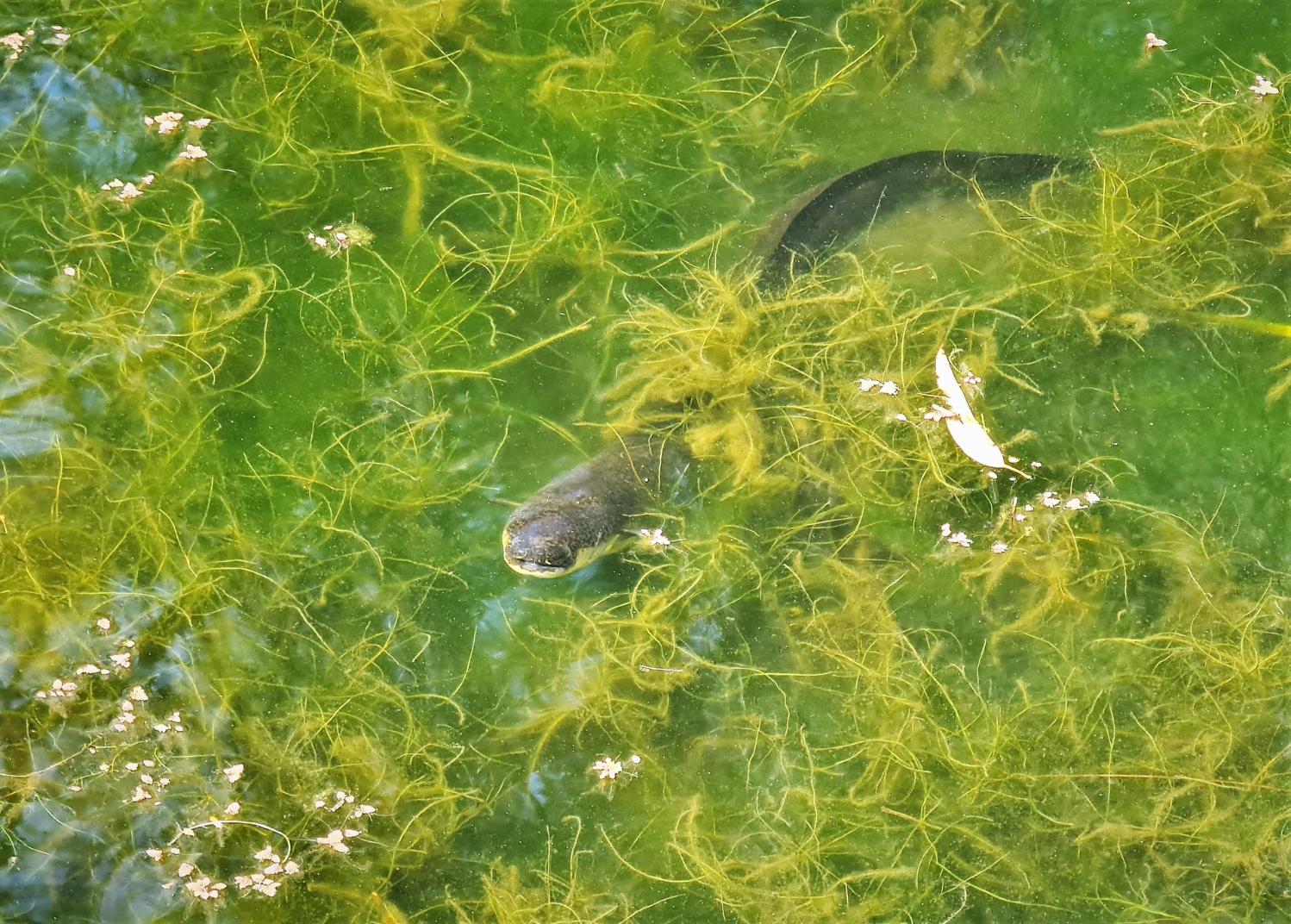
Bark Shedding Time - Pittwater Spotted Gums
.jpg?timestamp=1604150614681)
photo taken this week - by A J Guesdon.
Watch Out On The Pittwater Estuary Water Zones & Beaches: Seals Are About
Residents have filmed and photographed the seals living at Barrenjoey as far south as Rowland Reserve and over at Clareville beach in recent days and ask that people keep an eye out for them and ensure they are kept safe from boat strikes and dogs are kept off the beaches they're not supposed to be on.
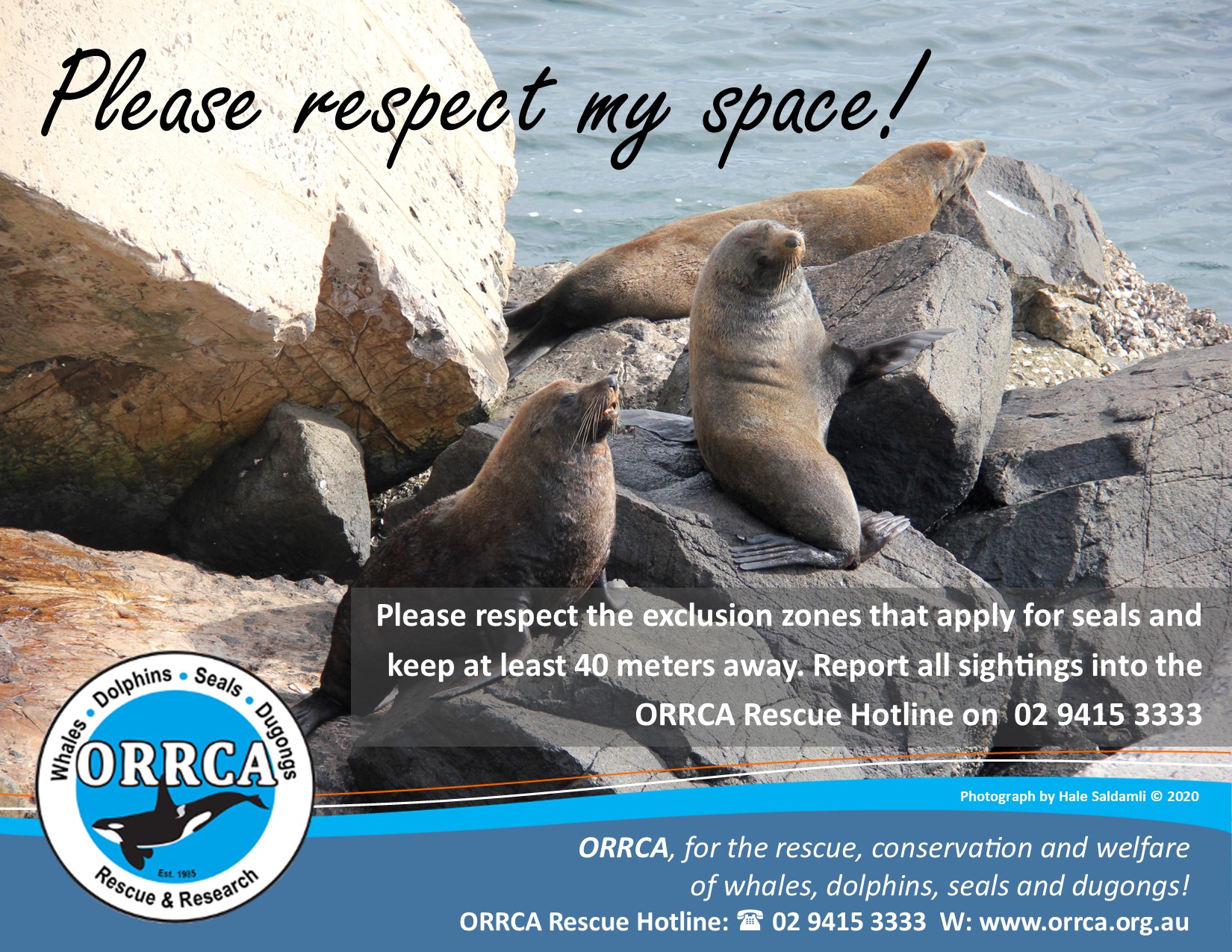
.jpg?timestamp=1604732571870)
.jpg?timestamp=1604732604972)
.jpg?timestamp=1604732642700)
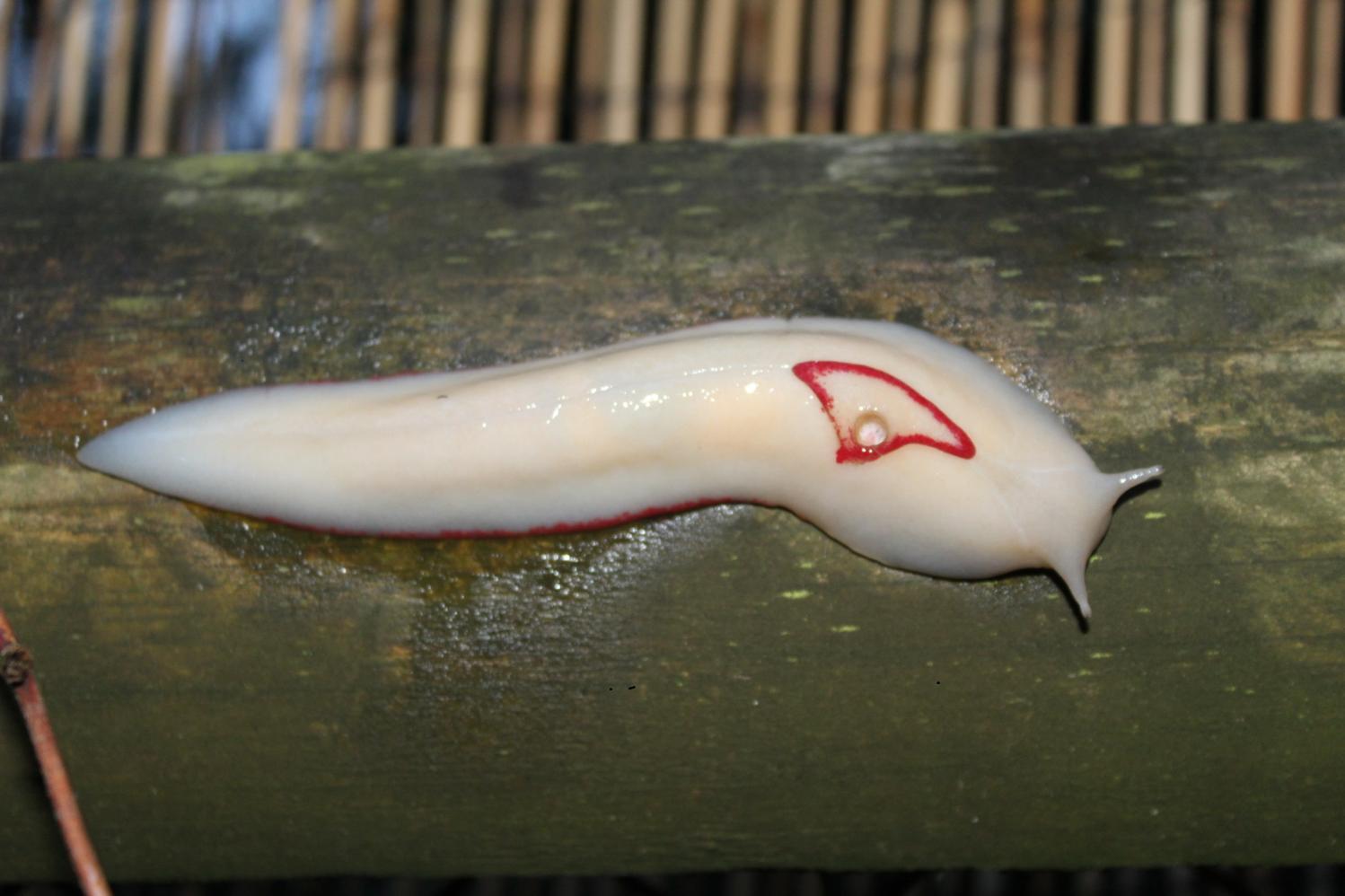
This slug (Triboniophorus graeffei) feeds on microscopic algae on smooth bark eucalypts, and algae on other smooth surfaces, leaving a narrow wiggly track. The Red Triangle Slug is Australia's largest native land slug. The distinctive red triangle on its back contains the breathing pore. This one was photographed in the Pittwater Online backyard this week amid all the rain we've had.
More at: australianmuseum.net.au/learn/animals/molluscs/red-triangle-slug
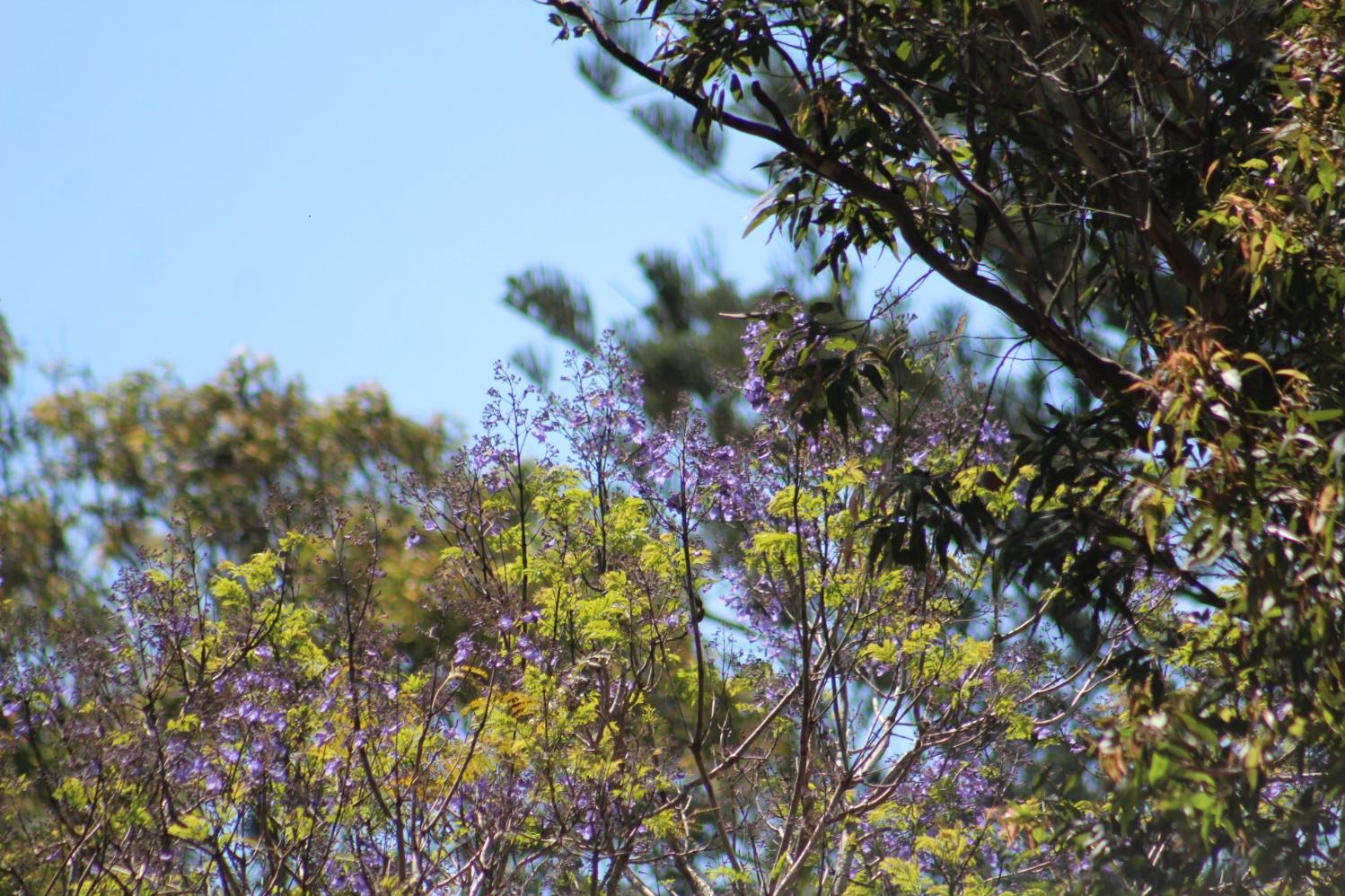
First Christmas Bells Of The Year
photo by Selena Griffith, November 7, 2020
Blandfordia nobilis, commonly known as Christmas bells or gadigalbudyari in Cadigal language, is a flowering plant endemic to New South Wales. It is a tufted, perennial herbs with narrow, linear leaves and between three and twenty large, drooping, cylindrical to bell-shaped flowers. The flowers are brownish red with yellow tips. It is one of four species of Blandfordia known as Christmas bells.
Blandfordia nobilis was first formally described in 1804 by English botanist James Edward Smith who published the description in Exotic Botany from dried specimens sent from Sydney by the colonial surgeon, John White. The type specimen was collected from Port Jackson about the year 1800. Blandfordia nobilis was first published in 1804 by English botanist James Edward Smith, and it still bears its original name. The specific epithet (nobilis) is a Latin word meaning "well-known", "celebrated" or "noble".
This photo of a stem of Christmas Bells was taken by a lady who lives here and loves to go for long walks through the bush in our area - bright, aren't they?
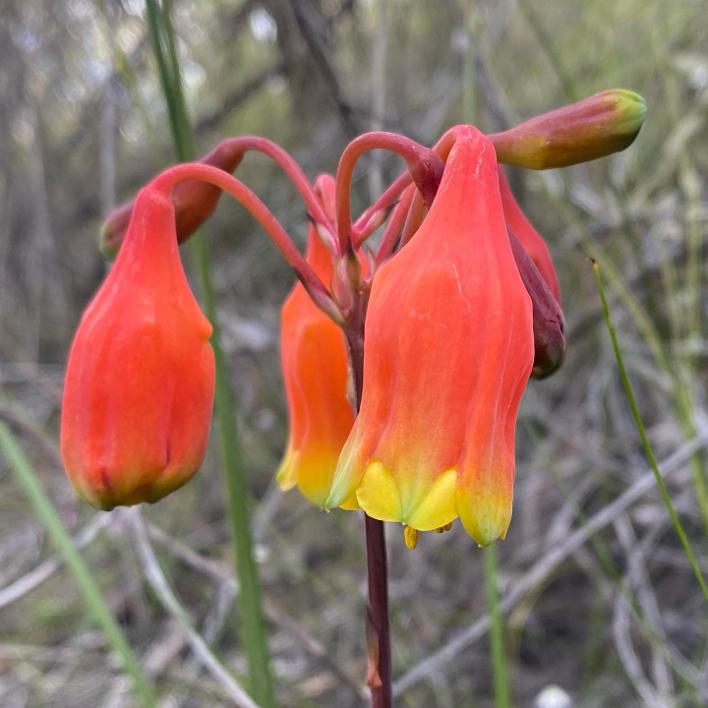
2020 BirdLife Australia Photography Awards Winners
Earlier this week an email from BirdLife Australia announced the results of the 2020 BirdLife Australia Photography Awards are now live on the official Awards website.
A huge congratulations to prize winners and short-listed entrants! All the entries were outstanding. With a record smashing 6207 entries the judges didn’t have an easy task!
Most importantly, thanks to the volume of entries BirdLife Australia will be able to donate a sizeable amount of the funds raised by the Awards to support BirdLife Australia's Preventing Extinctions Grey Range Thick-billed Grasswren project to help bring this critically endangered bird back from the brink.
Great news!
The 2021 Awards will open again mid-year with a new special theme: Plovers! So get those cameras and get some gorgeous photos for your chance to win.
Happy Birding!
The Coast
Radio Northern Beaches
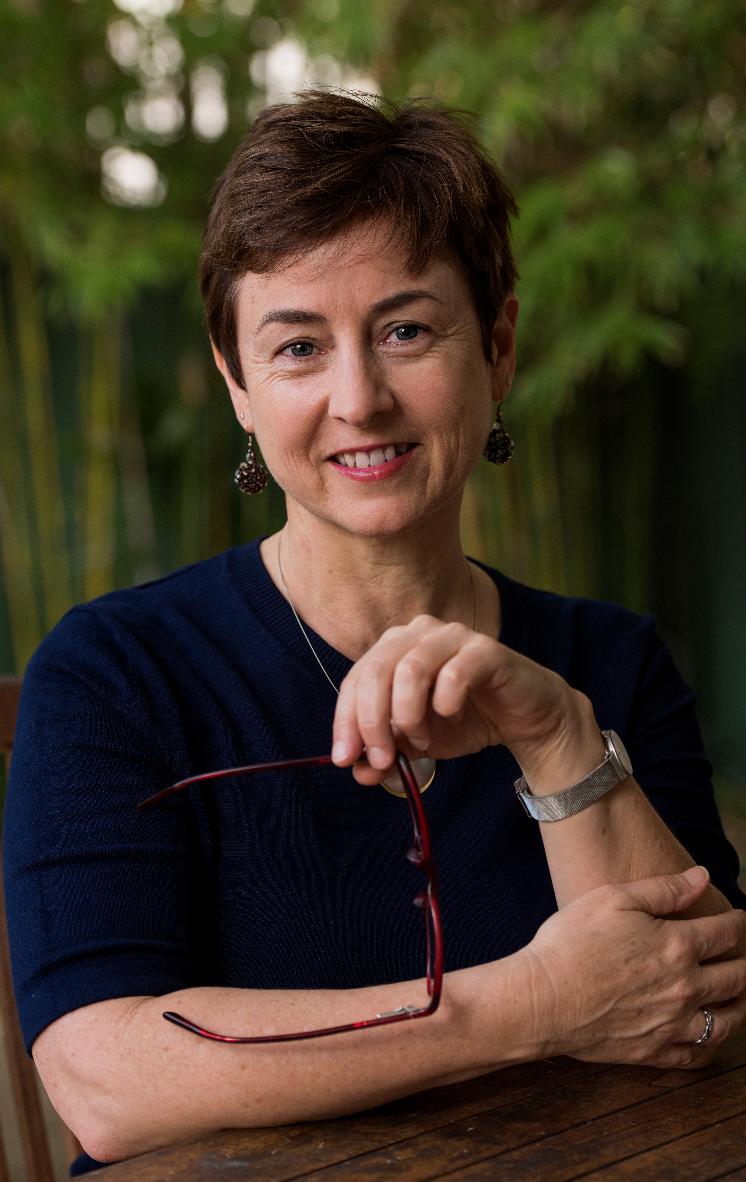
Draft Bush Fire Management Policy
FrogID Week
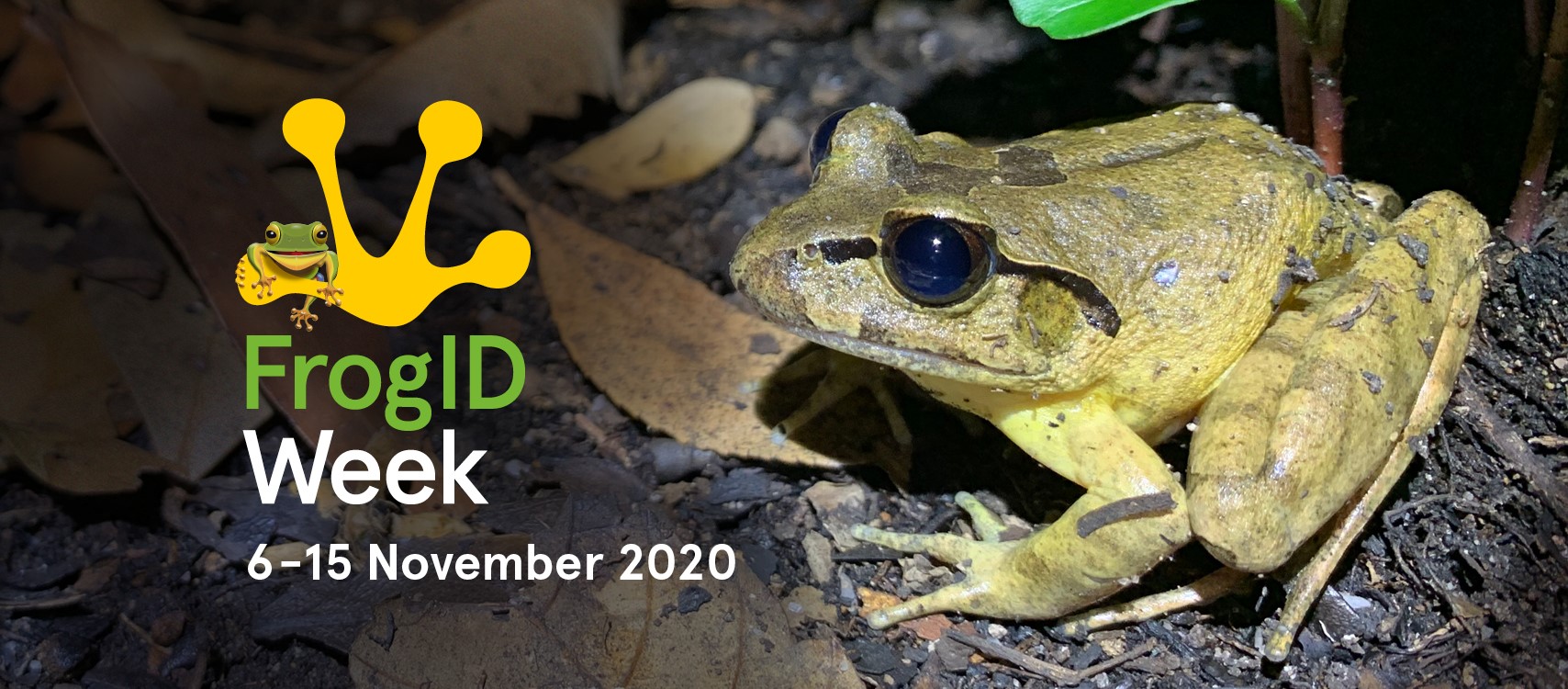
Can You Help Restore Our Environment? R&R Grants Open
The Serpentine Bilgola Shared Space Consult
- more space for cycling with cycle lanes on the uphill sections of The Serpentine
- a 10 km/h posted speed limit
- planter boxes, pavement paintings and marked parking bays.
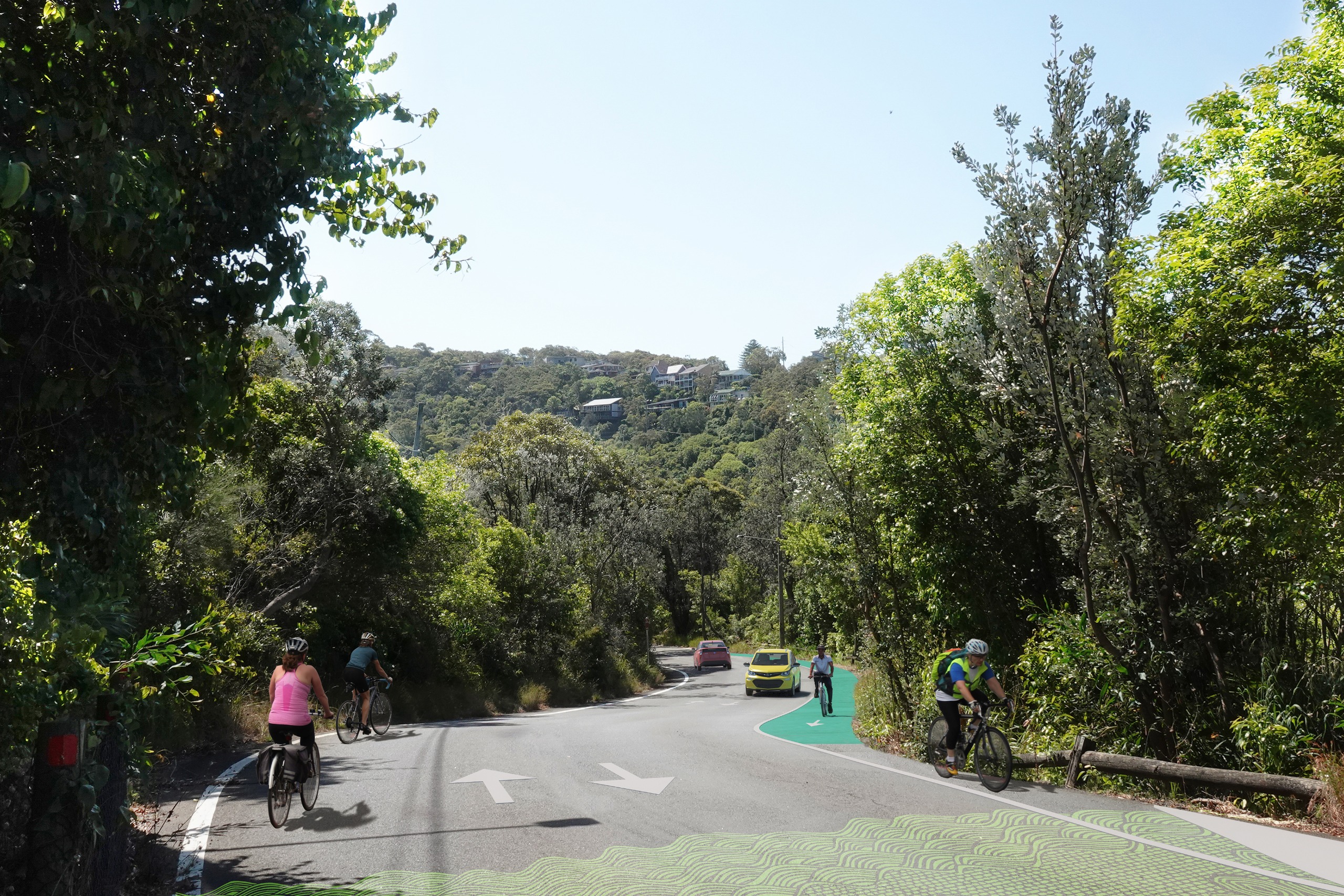
Newport - Avalon Pedestrian & Cycle Link Section 1
Newport - Avalon Pedestrian & Cycle Link
- 2.5 meter wide shared path from The Serpentine to Surfside Avenue (originally 3.5 meters wide)
- new path on Surfside Avenue (Eastern side) crossing to the western side and continuing into Avalon Parade
Wild Idea Incubator 2021: Do You Have A Great Idea?
- Majell Backhausen, Simon Harris and Hilary McAllister: For Wild Places
- Georgi and Bruce Ivers: Trees for Australia
- David Flood and Kate Torgernsen: Beyond the Fairway – Golf Embracing Nature
- Mark Gardener: Farm Level Environmental Profit and Loss Reporting
- Aimee Bowman and Holly Newman: Planet Warrior Education
- Camille Goldstone-Henry: Xylo Systems, a collaborative conservation reporting tool.
Bushcare In Pittwater
Where we work Which day What time
Avalon
Angophora Reserve 3rd Sunday 8:30 - 11:30am
Avalon Dunes 1st Sunday 8:30 - 11:30am
Avalon Golf Course 2nd Wednesday 3 - 5:30pm
Careel Creek 4th Saturday 8:30 - 11:30am
Toongari Reserve 3rd Saturday 9 - 12noon (8 - 11am in summer)
Bangalley Headland 2nd Sunday 9 to 12noon
Bayview
Winnererremy Bay 4th Sunday 9 to 12noon
Bilgola
North Bilgola Beach 3rd Monday 9 - 12noon
Algona Reserve 1st Saturday 9 - 12noon
Plateau Park 1st Friday 8:30 - 11:30am
Church Point
Browns Bay Reserve 1st Tuesday 9 - 12noon
McCarrs Creek Reserve Contact Bushcare Officer To be confirmed
Clareville
Old Wharf Reserve 3rd Saturday 8 - 11am
Elanora
Kundibah Reserve 4th Sunday 8:30 - 11:30am
 Mona Vale
Mona Vale Mona Vale Beach Basin 1st Saturday 8 - 11am
Mona Vale Dunes 2nd Saturday +3rd Thursday 8:30 - 11:30am
Newport
Bungan Beach 4th Sunday 9 - 12noon
Crescent Reserve 3rd Sunday 9 - 12noon
North Newport Beach 4th Saturday 8:30 - 11:30am
Porter Reserve 2nd Saturday 8 - 11am
North Narrabeen
Irrawong Reserve 2nd Saturday 2 - 5pm
Palm Beach
North Palm Beach Dunes 3rd Saturday 9 - 12noon
Scotland Island
Catherine Park 2nd Sunday 10 - 12:30pm
Elizabeth Park 1st Saturday 9 - 12noon
Pathilda Reserve 3rd Saturday 9 - 12noon
Warriewood
Warriewood Wetlands 1st Sunday 8:30 - 11:30am
Whale Beach
Norma Park 1st Friday 9 - 12noon
Western Foreshores
Coopers Point, Elvina Bay 2nd Sunday 10 - 1pm
Rocky Point, Elvina Bay 1st Monday 9 - 12noon
Gardens And Environment Groups And Organisations In Pittwater
Discovery Triples Greater Glider Species In Australia
November 6, 2020
Australian scientists have discovered one of Australia's best-loved animals is actually three different species.
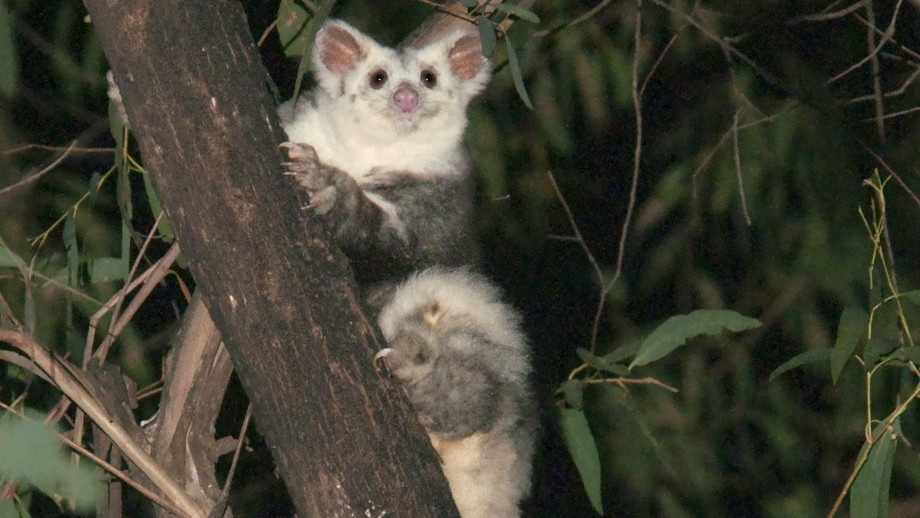 A team of researchers from James Cook University (JCU), The Australian National University (ANU), the University of Canberra and CSIRO analysed the genetic make-up of the greater glider - a possum-sized marsupial that can glide up to 100 metres.
A team of researchers from James Cook University (JCU), The Australian National University (ANU), the University of Canberra and CSIRO analysed the genetic make-up of the greater glider - a possum-sized marsupial that can glide up to 100 metres.
JCU's PhD student Denise McGregor and Professor Andrew Krockenberger were part of a team that confirmed a long-held theory that the greater glider is actually multiple species.
As a part of her PhD project to understand why greater gliders varied so much across their range, Ms McGregor discovered that the genetic differences between the populations she was looking at were profound.
"There has been speculation for a while that there was more than one species of greater glider, but now we have proof from the DNA. It changes the whole way we think about them," she said.
"Australia's biodiversity just got a lot richer. It's not every day that new mammals are confirmed, let alone two new mammals," Professor Krockenberger said.
"Differences in size and physiology gave us hints that the one accepted species was actually three. For the first time, we were able to use Diversity Arrays (DArT) sequencing to provide genetic support for multiple species."
Greater gliders, much larger than the more well-known sugar gliders, eat only eucalyptus leaves and live in forests along the Great Dividing Range from northern Queensland to southern Victoria. Once common, they are now listed as 'vulnerable', with their numbers declining.
Dr Kara Youngentob, a co-author from ANU, said the identification and classification of species are essential for effective conservation management.
"This year Australia experienced a bushfire season of unprecedented severity, resulting in widespread habitat loss and mortality. As a result, there's been an increased focus on understanding genetic diversity and structure of species to protect resilience in the face of climate change," she said.
"The division of the greater glider into multiple species reduces the previous widespread distribution of the original species, further increasing conservation concern for that animal and highlighting the lack of information about the other greater glider species."
She said there have been alarming declines in greater glider populations in the Blue Mountains, NSW and Central Highlands, Victoria and localised extinctions in other areas.
"The knowledge that there is now genetic support for multiple species, with distributions that are much smaller than the range of the previously recognised single species, should be a consideration in future conservation status decisions and management legislation," Dr Youngentob said.
The research is published in Scientific Reports.
Greater Glider photo by Denise Taylor
An open letter from 1,200 Australian academics on the Djab Wurrung trees
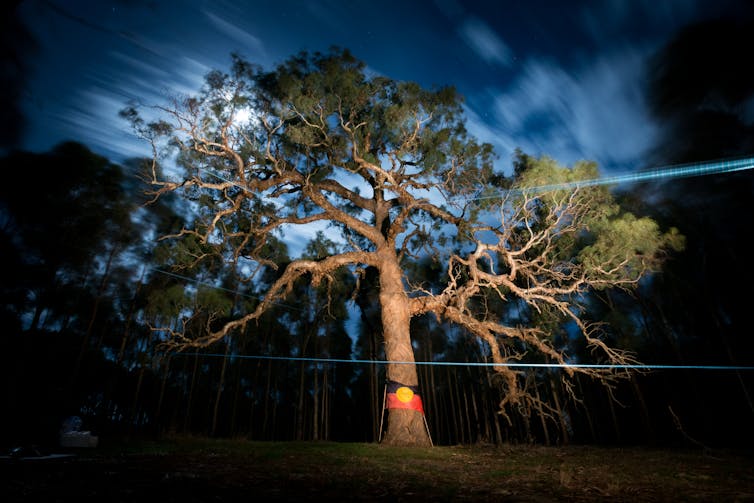
In an open letter, more than 1,200 academics from universities and institutes across Australia have written to the Victorian government to protest against the destruction of Djab Wurrung country as part of a highway duplication in the west of the state.
The letter follows the removal of the Directions Tree last week. The signatories listed below are both Indigenous and non-Indigenous.
We are Australian academics* writing to condemn the destruction of the 350 year-old sacred Djab Wurrung Directions Tree at the hands of the Victorian government. We call on the government to urgently halt works and protect the remaining Djab Wurrung trees and land from destruction.
We are historians, geographers, lawyers, criminologists, sociologists, scientists, anthropologists, social workers, linguists, archaeologists, artists, architects, philosophers, psychologists and other academics from universities around Australia. We have come together in our sorrow and anger at the colonial violence currently being perpetrated by the Victorian government against the Djab Wurrung people, and against all First Nations people in Australia.
While all trees hold value, especially in a climate crisis, the Djab Wurrung trees are so much more than “just trees”; they are living entities with significant historical, cultural and spiritual value and meaning. They are part of an important songline, and have been physically shaped by hundreds of years of First Nations culture and ceremonial practice.
Read more: Churches have legal rights in Australia. Why not sacred trees?
Take the Directions Tree, for example, which was cut down with a chainsaw last week, and carted away unceremoniously on the back of a dump truck. This massive and strikingly beautiful 350-year-old Yellowbox tree with distinctive swirling bark, had been planted as a seed with the placenta from a Djab Wurrung child’s birth and its branches actively shaped and directed over time.
It would have been difficult to look at this tree — to truly bear witness to it — without forever changing the way one understands trees, our interconnectedness with nature, and the strength, depth, beauty and longevity of First Nations culture.
Consider too, the Birthing Tree, also known as a Grandmother Tree, estimated to be 800 years old and currently under imminent threat of destruction. She has a hollow at her base where over 50 generations of Djab Wurrung babies have been born, the fluids from their births merging with the root system and literally becoming part of the tree.
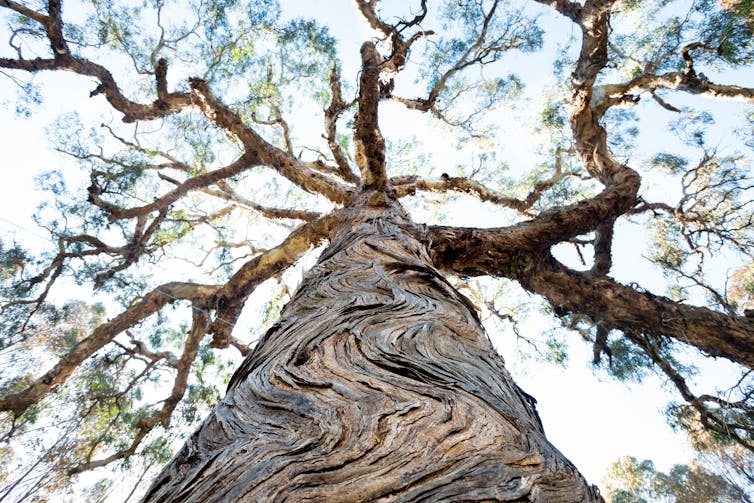
Nearby, and leaning towards it, is the Grandfather Tree, believed to have been planted at the same time and connected via underground root systems. And surrounding them both are hundreds of other significant trees and artefacts, many of which are yet to be formally documented.
The Victorian government’s decision to clear this sacred Djab Wurrung land to make way for a particular version of highway re-routing that will save drivers two minutes travel time, is completely unnecessary. It represents the ongoing violence of our colonial state and its contempt for First Nations culture and people. It makes any talk of a Treaty with First Nations Victorians completely disingenuous.
We, as academics, therefore condemn the cutting down of the Directions Tree and the planned destruction of further sacred trees and artefacts. We condemn the timing of the destruction, under the cover of ongoing COVID rules, preventing defenders from traveling to the site, and under the cover of media and public focus on Melbourne’s long-awaited easing of lockdown.
Read more: What kind of state values a freeway's heritage above the heritage of our oldest living culture?
We condemn the Victorian government’s apparent attempts to create doubt about which tree was destroyed and its significance, and to imply agreements with one group of government-recognised stakeholders amounted to respectful consultation. And we condemn the use of police and security to violently evict the peaceful Djab Wurrung Embassy, which was established by local elders to protect the site.
We urge the Victorian government to take up one of the other options for highway improvements that do not involve further destruction of this significant site, to urgently have these trees recognised as the culturally significant entities they are, and to enable the Djab Wurrung people to continue protecting them for future generations.
*The views expressed in this letter are those of the signatories and not their universities or institutions.![]()
Open Letter Signatories
- Professor Aileen Moreton-Robinson, Indigenous Studies, RMIT University
- Professor Irene Watson, Law, University of SA
- Professor Bronwyn Fredericks, Education and Health, University of Queensland
- Dr Vicki L Couzens, Media, RMIT University
- Dr Gary Foley, History, Victoria University
- Tiriki Onus, Fine Arts and Music, University of Melbourne
- Dr Lou Bennett AM, Social and Political Science, University of Melbourne
- Associate Professor Chelsea Bond, Social Sciences and Health, University of Queensland
- Alison Whittaker, Law, University of Technology Sydney
- Amanda Porter, Law, University of Queensland
- Kim Kruger, Moondani Balluk Academic Centre, Victoria University
- Professor Bronwyn Carlson, Indigenous Studies, Macquarie University
- Professor Gregory Phillips, Indigenous Health, Griffith University
- Professor Peter Anderson, Education, Queensland University of Technology
- Professor Yin Paradies, Sociology, Deakin University
- Dr Ali Gumillya Baker, Indigenous and Australian Studies, Flinders University
- Associate Professor Leesa Watego, Business, Queensland University of Technology
- Associate Professor Sana Nakata, Political Science, University of Melbourne
- Associate Professor Sandy O'Sullivan, Indigenous Studies, University of the Sunshine Coast
- Dr Nikki Moodie, Sociology, University of Melbourne
- Dr Sharlene Leroy-Dyer, Aboriginal Studies, University of Queensland
- Dr Anthony McKnight, Education, University of Wollongong
- Dr Summer May Finlay, Public Health, University of Wollongong
- Dr Suzi Hutchings, Anthropology, RMIT University
- Dr Tess Ryan, Leadership and Research Pathways, Australian Catholic University
- Dr Danièle Hromek, Indigenous Design, Queensland University of Technology
- Dr Crystal McKinnon, Social and Global Studies, RMIT University
- Dr Jessa Rogers, Indigenous Studies, Macquarie University
- Dr Julia Hurst, Aboriginal History, University of Melbourne
- Aleryk Fricker, Indigenous Education, RMIT University
- Ashley Perry, Indigenous Culture and Visual Art, University of Melbourne
- Brett Biles, Indigenous Health, University of NSW
- Cammi Murrup-Stewart, Aboriginal Wellbeing, Monash University
- Catherine Doe, Indigenous Studies, RMIT University
- Charlotte Franks, Indigenous Education, RMIT University
- Dale Rowland, Psychology, Griffith University
- Dominique Chen, Indigenous Studies, University of Queensland
- Eddie Synot, Law, Griffith University
- Emma Gavin, Indigenous Knowledges, Swinburne University
- Aileen Marwung Walsh, History, Australian National University
- Eugenia Flynn, Literary Studies, Queensland University of Technology
- Holly Charles, Law, RMIT University
- Jacynta Krakouer, Social Work, University of Melbourne
- Jason Brailey, Indigenous Education, RMIT University
- Latoya Rule, Social Work and Social Planning, Flinders University
- Lewis Brown, Indigenous Education, RMIT University
- Luke Williams, Science, RMIT University
- Maddee Clark, Literature, University of Melbourne
- Michael Colbung, Education, University of Adelaide
- Mykaela Saunders, Indigenous Studies, University of Sydney
- Natasha Ward, Indigenous Education and Research, RMIT University
- Nicole Shanahan, Indigenous Education, RMIT University
- Robyn Oxley, Criminology, Western Sydney University
- Stacey Campton, Indigenous Engagement, RMIT University
- Natalie Ironfield, Criminology, University of Melbourne
- Neika Lehman, Film and Media, Anthropology, RMIT University
- Dr Aaron Collins, Medicine, University of Melbourne
- Aaron Magro, History, University of Melbourne
- Associate Professor Abby Mellick Lopes, Design, University of Technology Sydney
- Adam Crowe, Geography, Curtin University
- Adam Spellicy, Media, RMIT University
- Dr Adam Starr, Music, Melbourne Polytechnic
- Associate Professor Adele Wessell, History, Southern Cross University
- Dr Adrian Farrugia, Sociology, La Trobe University
- Agata Pukiewicz, Legal Studies, Australian National University
- Dr Aidan Craney, Anthropology, La Trobe University
- Ainslee Meredith, Conservation, University of Melbourne
- Dr Ainslie Meiklejohn, Humanities, Griffith University
- Aisha Malik, Humanities, University of Sydney
- Emeritus Professor Alan Rumsey, Anthropology, Australian National University
- Associate Professor Alana Lentin, Humanities, Western Sydney University
- Dr Alana Piper, History, University of Technology Sydney
- Alana West, Sociology, University of Technology Sydney
- Professor Alex Broom, Sociology, University of Sydney
- Alex Cain, Philosophy, Monash University
- Dr Alex Gawronski, Art, University of Sydney
- Dr Alex Hansford-Smith, Physiotherapy, University of Melbourne
- Dr Alex Kusmanoff, Conservation, RMIT University
- Dr Alexandra Crosby, Design, University of Technology Sydney
- Alexandra Haschek, Psychology, La Trobe University
- Alexandre da Silva Faustino, Geography, RMIT University
- Alexia Adhikari, Development, University of Adelaide
- Alice Bellette, Literature, Deakin University
- Associate Professor Alice Gaby, Linguistics, Monash University
- Dr Alice Jones, Ecology, University of Adelaide
- Alice Wighton, Anthropology, Australian National University
- Alicia Flynn, Education, University of Melbourne
- Alisa Yuko Bernhard, Musicology, University of Sydney
- Alison Burns, International Studies, Deakin University
- Dr Alison Holland, History, Macquarie University
- Dr Alison Lullfitz, Ethnobiology, University of WA
- Dr Alison Peel, Science, Griffith University
- Alison Winning, Social Science, James Cook University
- Professor Alison Young, Criminology, University of Melbourne
- Alissa Flatley, Geography, University of Melbourne
- Dr Alissa Macoun, Politics, Queensland University of Technology
- Professor Alistair McCulloch, Education, University of SA
- Dr Alistair Sisson, Geography, University of NSW
- Allison Larmour, Politics, University of Sydney
- Alys Young, Ecology, University of Melbourne
- Alyssa Choat, Design, University of Technology Sydney
- Alyssa Sigamoney, Criminology, RMIT University
- Dr Amal Osman, Health, Flinders University
- Dr Amanda Coles, Employment Relations, Deakin University
- Professor Amanda Kearney, Anthropology, Flinders University
- Dr Amelia Hine, Geography, Queensland University of Technology
- Dr Amelia Johns, Media, University of Technology Sydney
- Amélie Scalercio, Fine Arts, Monash University
- Dr Amie O'Shea, Health, Deakin University
- Dr Amy Barrow, Law, Macquarie University
- Dr Amy Carrad, Public Health, University of Wollongong
- Amy Cleland, Social Science, University of SA
- Amy Hampson, Neuroscience, University of Melbourne
- Dr Amy McKernan, Education, University of Melbourne
- Dr Amy McPherson, Education, Australian Catholic University
- Dr Amy Prendergast, Geography, University of Melbourne
- Amy Thomas, Education, University of Technology Sydney
- Amy-Jo Jory, Art, Swinburne University
- Dr Ana Maria Ducasse, Languages, RMIT University
- Ananya Majumdar, Social Science, RMIT University
- Dr Anastasia Kanjere, Humanities, La Trobe University
- Dr Anastasia Powell, Criminology, RMIT University
- Professor Andrea Lamont-Mills, Psychology, University of Southern Queensland
- Professor Andrea Durbach, Law, University of NSW
- Associate Professor Andrea Rizzi, Arts, University of Melbourne
- Associate Professor Andrew Bonnell, History, University of Queensland
- Dr Andrew Brooks, Humanities, University of NSW
- Associate Professor Andrew Butt, Urban Planning, RMIT University
- Dr Andrew Lapworth, Geography, University of NSW
- Dr Andrew Miller, Art, Flinders University
- Associate Professor Andrew Murphie, Media, University of NSW
- Andrew Murray, Architecture, University of Melbourne
- Professor Andrew Scholey, Psychopharmacology, Swinburne University
- Andrew Treloar, Art, University of Melbourne
- Professor Andrew Vallely, Public Health, University of NSW
- Dr Andrew Whelan, Sociology, University of Wollongong
- Andy Bates, Design, Queensland University of Technology
- Dr Andy Kaladelfos, Criminology, University of NSW
- Andy White, Music, Melbourne Polytechnic
- Dr Angela Dean, Environment Studies, Queensland University of Technology
- Associate Professor Angela Kelly-Hanku, Anthropology, University of NSW
- Angela Kintominas, Law, University of NSW
- Angela Osborne, Communication, Deakin University
- Dr Angelika Papadopoulos, Social Work, RMIT University
- Angus Burns, Psychology, Monash University
- Ani Landsu-Ward, Social Science, RMIT University
- Professor Anina Rich, Neuroscience, Macquarie University
- Dr Anita Trezona, Public Health, Deakin University
- Associate Professor Anitra Nelson, Social Science, University of Melbourne
- Anja Dickel, Pharmacy, University of SA
- Dr Anja Kanngieser, Geography, University of Wollongong
- Dr Anna Bowring, Public Health, Burnet Institute
- Anna Dunn, Anthropology, University of Sydney
- Anna Gross, Resources, University of Newcastle
- Dr Anna Hermkens, Anthropology, Macquarie University
- Dr Anna Hopkins, Ecology, Edith Cowan University
- Anna Krohn, Education, University of Melbourne
- Anna Loewendahl, Arts, University of Melbourne
- Anna Nervegna, Architecture, University of Melbourne
- Anna Tweeddale, Architecture, Queensland University of Technology
- Dr Anna Willis, Archaeology, James Cook University
- Dr Annalea Beattie, Writing, RMIT University
- Dr Anne Décobert, Anthropology, University of Melbourne
- Dr Anne Elvey, Theology, Monash University
- Associate Professor Anne Junor, Employment Relations, University of NSW
- Dr Anne Marie Ross, Education, University of Newcastle
- Dr Annette Kroen, Urban Planning, RMIT University
- Dr Annie Delaney, Industrial Relations, RMIT university
- Dr Annie Gowing, Education, University of Melbourne
- Associate Professor Anthony Hopkins, Law, Australian National University
- Dr Anthony Kent, Social Science, RMIT University
- Associate Professor Anthony Langlois, International Relations, Flinders University
- Anthony Schulx, Music, Melbourne Polytechnic
- Anthony Smith, Sociology, University of NSW
- Antoine Mangion, Education, Australian Catholic University
- Anwar Hossain, Ecology, University of Melbourne
- Dr April Reside, Ecology, University of Queensland
- Arden Haar, Geography, University of Melbourne
- Dr Arlo Mountford, Arts, RMIT University
- Dr Ascelin Gordon, Conservation, RMIT University
- Ash Johnstone, Humanities, University of Wollongong
- Ashley Barnwell, Sociology, University of Melbourne
- Ashley Thomson, Anthropology, Australian National University
- Dr Astrida Neimanis, Cultural Studies, University of Sydney
- Badrul Hyder, Urban Studies, RMIT University
- Associate Professor Barbara Kelly, Linguistics, University of Melbourne
- Dr Barry Morris, Anthropology, Newcastle University
- Associate Professor Bastien Llamas, Evolutionary Genomics, University of Adelaide
- Dr Bek Christensen, Ecology, Queensland University of Technology
- Dr Ben Silverstein, History, Australian National University
- Associate Professor Ben Spies-Butcher, Sociology, Macquarie University
- Dr Ben Vezina, Biology, Monash University
- Dr Benjamin Cooke, Geography, RMIT University
- Dr Benjamin Habib, International Relations, La Trobe University
- Dr Benjamin Hegarty, Anthropology, University of Melbourne
- Bernard Keo, History, Monash University
- Dr Beth Cardier, Communications, Griffith University
- Beth Marsden, History, La Trobe University
- Bethany Kenyon, Social Sciences, RMIT University
- Bethia Burgess, Criminology, University of Melbourne
- Dr Betty Luu, Psychology, University of Sydney
- Dr Bianca Fileborn, Criminology, University of Melbourne
- Bianca Hennessy, Pacific Studies, Australian National University
- Professor Billie Giles-Corti, Public Health, RMIT University
- Associate Professor Bina Fernandez, Development Studies, University of Melbourne
- Dr Bindi Bennett, Social Work, University of the Sunshine Coast
- Dr Blair Williams, Political Science, Australian National University
- Dr Blue Mahy, Education, Monash University
- Professor Bob Hodge, Communication studies, Western Sydney University
- Dr Bonny Cassidy, Writing, RMIT University
- Dr Brian Cuddy, History, Macquarie University
- Dr Bridget Harris, Criminology, Queensland University of Technology
- Dr Bridget Lewis, Law, Queensland University of Technology
- Dr Brigid Magner, Literature, RMIT University
- Briony Neilson, History, University of Sydney
- Dr Briony Towers, Psychology, RMIT University
- Dr Brodie Evans, Social Justice, Queensland University of Technology
- Bronwyn Ann Sutton, Education, Deakin University
- Dr Bronwyn Cumbo, Education, Monash University
- Dr Brooke Wilmsen, Geography, La Trobe University
- Associate Professor Cai Wilkinson, International Studies, Deakin University
- Professor Callum Morton, Fine Art, Monash University
- Cally Mills, Nursing, Australian Catholic University
- Cameron Coventry, History, Federation University
- Professor Cameron Tonkinwise, Design, University of Technology Sydney
- Dr Can Yalcinkaya, Media, Macquarie University
- Dr Candice Boyd, Geography, University of Melbourne
- Professor Carey Curtis, Planning, Curtin University
- Professor Carla Treloar, Social Science, University of NSW
- Dr Carly Monks, Archaeology, University of WA
- Carmen Jacques, Anthropology, Edith Cowan University
- Carol Que, Arts, University of Melbourne
- Associate Professor Carol Warren, Anthropology, Murdoch University
- Dr Caroline Mahoney, Education, Deakin University
- Dr Caroline Wake, Theatre, University of NSW
- Carolyn D'Cruz, Gender Studies, La Trobe University
- Dr Carolyn Eskdale, Art, RMIT University
- Professor Carolyn Whitzman, Urban Planning, University of Melbourne
- Casey Hosking, Psychology, La Trobe University
- Cat Macleod, Architecture, Melbourne Polytechnic
- Professor Catherine Althaus, Public Administration, University of NSW
- Professor Catherine Greenhill, Mathematics, University of NSW
- Dr Catherine Hartung, Education, Swinburne University
- Dr Catherine Innes Clover, Fine Art, Swinburne University
- Professor Catherine McMahon, Health, Macquarie University
- Dr Catherine Phillips, Geography, University of Melbourne
- Catherine Townsend, Architecture, University of Melbourne
- Catherine Weiss, Philosophy, RMIT University
- Dr Cayne Layton, Ecology, University of Tasmania
- Associate Professor Cecily Maller, Geography, RMIT University
- Dr Chantel Carr, Geography, University of Wollongong
- Charity Edwards, Architecture, Monash University
- Associate Professor Charles Livingstone, Public Health, Monash University
- Dr Charles Robb, Visual Arts, Queensland University of Technology
- Professor Charles Sowerwine, History, University of Melbourne
- Charlie Cooper, Psychology, University of Melbourne
- Charlie Sofo, Visual Art, Monash University
- Charlotte Day, Art, Monash University
- Dr Chin Jou, History, University of Sydney
- Dr Chloe Ward, European Studies, RMIT University
- Associate Professor Chris Healy, Cultural Studies, University of Melbourne
- Dr Chris Maylea, Social Work, RMIT University
- Dr Chris Pam, Anthropology, James Cook University
- Dr Chris Peers, Education, Monash University
- Dr Chris Urwin, Archaeology, Monash University
- Christel Antonites, Humanities, Queensland University of Technology
- Dr Christina David, Social Work, RMIT University
- Dr Christine Agius, Politics, Swinburne University
- Dr Christo Bester, Neuroscience, University of Melbourne
- Christopher Cordner, Philosophy, University of Melbourne
- Christopher Hallam, Ecology, University of Melbourne
- Dr Christopher McCaw, Education, University of Melbourne
- Associate Professor Christy Newman, Sociology, University of NSW
- Professor Ciaran O'Faircheallaigh, Politics, Griffith University
- Dr Ciemon Caballes, Ecology, James Cook University
- Claire Akhbari, Indigenous Studies, University of Melbourne
- Dr Claire Loughnan, Criminology, University of Melbourne
- Dr Claire Nettle, Politics, Flinders University
- Dr Claire Spivakovsky, Criminology, University of Melbourne
- Dr Clare Cooper, Design, University of Sydney
- Associate Professor Clare Corbould, History, Deakin University
- Dr Clare Land, History, Victoria University
- Clare Rae, Fine Art, University of Melbourne
- Dr Clare Southerton, Sociology, University of NSW
- Dr Clare Weeden, Medicine, University of Melbourne
- Professor Clare Wright, History, La Trobe University
- Dr Claudia Marck, Public Health, University of Melbourne
- Dr Clemence Due, Psychology, University of Adelaide
- Connor Jolley, Geography, RMIT University
- Dr Coralie Boulet, Microbiology, La Trobe University
- Professor Corey Bradshaw, Ecology, Flinders University
- Dr Corrinne Sullivan, Geography, Western Sydney University
- Dr Courtney Babb, Urban Planning, Curtin University
- Dr Courtney Morgans, Ecology, University of Queensland
- Dr Courtney Pedersen, Visual Arts, Queensland University of Technology
- Craig Lyons, Geography, University of Wollongong
- Dr Cristy Clark, Law, University of Canberra
- Dr Crystal Legacy, Urban Planning, University of Melbourne
- Dr Cullan Joyce, Philosophy, University of Divinity
- Dr Cynthia Hunter, Anthropology, University of Sydney
- Daisy Bailey, History, Monash University
- Daisy Gibbs, Public Health, University of NSW
- Dr Dallas Rogers, Urbanism, University of Sydney
- Associate Professor Damien Cahill, Politics, University of Sydney
- Dr Dan Golding, Media, Swinburne University
- Dr Daniel Brennan, Philosophy, Bond University
- Dr Daniel Lopez, Philosophy, La Trobe University
- Dr Daniel Ohlsen, Botany, University of Melbourne
- Professor Daniel Palmer, Art, RMIT University
- Daniel Reeders, Regulation and Governance, Australian National University
- Associate Professor Daniel von Sturmer, Fine Art, Monash University
- Dr Daniella Forster, Education, University of Newcastle
- Professor Danielle Celermajer, Sociology, University of Sydney
- Dr Dara Conduit, Politics, Deakin University
- Professor Darryl Jones, Environmental Science, Griffith University
- Dr Dave McDonald, Criminology, University of Melbourne
- Dr David Brophy, History, University of Sydney
- Professor David Carlin, Writing, RMIT University
- Dr David Coombs, Public Policy, University of NSW
- Dr David Hurwood, Ecology, Queensland University of Technology
- Dr David Kelly, Geography, RMIT University
- Dr David Pollock, Politics, RMIT University
- Dr David Ripley, Philosophy, Monash University
- Dr David Rousell, Education, RMIT University
- Emeritus Professor David Rowe, Sociology, Western Sydney University
- Dr David Singh, Sociology, University of Queensland
- Associate Professor David Slucki, Sociology, Monash University
- Dr David Smith, Politics, University of Sydney
- Dr David Spencer, Communication, University of Canberra
- Associate Professor Dawn Darlaston-Jones, Behavioural Science, University of Notre Dame
- Dr Deb Batterham, Social Science, Swinburne University of Technology
- Dr Debbi Long, Anthropology, RMIT University
- Dr Deborah Apthorp, Psychology, University of New England
- Dr Deborah Cleland, Governance, Australian National University
- Deborah Lee-Talbot, History, Deakin University
- Dr Deborah Moore, Education, Deakin University
- Dr Debra McDougall, Anthropology, University of Melbourne
- Declan Martin, Urban Planning, Monash University
- Professor Deirdre Coleman, English, University of Melbourne
- Dr Deirdre Hayes, Australian Studies, University of SA
- Professor Devleena Ghosh, Social Science, University of Technology Sydney
- Dr Diana Johns, Criminology, University of Melbourne
- Dr Diana Shahinyan, English, Sydney University
- Dimity Hawkins, History, Swinburne University
- Dion Tuckwell, Design, Monash University
- Dr Dolly Kikon, Anthropology, University of Melbourne
- Dr Dominic De Nardo, Medicine, Monash University
- Dr Dominique Moritz, Law, University of the Sunshine Coast
- Dr Dominique Potvin, Ecology, University of the Sunshine Coast
- Associate Professor Donna Houston, Geography, Macquarie University
- Dr Duc Dau, Humanities, University of WA
- Dr Eden Smith, History, University of Melbourne
- Dr Eduardo Jordan, Journalism, Griffith University
- Dr Effie Karageorgos, History, University of Newcastle
- Dr Elena Benthaus, Humanities, Deakin University
- Dr Elena Prieto, Education, University of Newcastle
- Elena Tjandra, Geography, University of Melbourne
- Dr Elese Dowden, Philosophy, University of Queensland
- Dr Elise Klein, Public Policy, Australian National University
- Dr Elizabeth Branigan, Anthropology, La Trobe University
- Elizabeth Culhane, Philosophy, University of Queensland
- Elizabeth Duncan, Geography, Sydney University
- Elizabeth King, English, Macquarie University
- Dr Elizabeth Orr, Social Work, University of Melbourne
- Professor Elizabeth Povinelli, Anthropology, Charles Darwin University
- Dr Elke Emerald, Education, Griffith University
- Ellen Corrick, Geography, University of Melbourne
- Elliot Gould, Ecology, University of Melbourne
- Dr Ellyse Fenton, Politics, University of Queensland
- Dr Emily Brayshaw, History, University of Technology Sydney
- Emily Corbett, Gender Studies, La Trobe University
- Dr Emily Gray, Education, RMIT University
- Emily McColl-Gausden, Ecology, University of Melbourne
- Emily Miller, Justice Studies, University of SA
- Emily Miller, Archaeology, Griffith University
- Dr Emily O'Gorman, Geography, Macquarie University
- Associate Professor Emily Potter, Literature, Deakin University
- Dr Emily Rugel, Epidemiology, University of Sydney
- Emily Toome, Social Sciences, RMIT University
- Dr Emily van der Nagel, Communication, Monash University
- Emma Barnes, Social Science, University of NSW
- Dr Emma Colvin, Criminology, Charles Sturt University
- Emma George, Occupational Therapy, University of Adelaide
- Professor Emma Kowal, Anthropology, Deakin University
- Dr Emma Rehn, Environmental Science, James Cook University
- Dr Emma Robertson, History, La Trobe University
- Dr Emma Russell, Legal Studies, La Trobe University
- Dr Emma Whatman, Gender Studies, Deakin University
- Emmalee Ford, Biochemistry, University of Newcastle
- Emmeline Kildea, Media, RMIT University
- Dr Emmett Stinson, Literature, Deakin University
- Epperly Zhang, Translation and Interpreting, RMIT University
- Dr Erica Millar, Legal Studies, La Trobe University
- Professor Erik Eklund, History, Federation University
- Dr Erin Fitz-Henry, Anthropology, University of Melbourne
- Dr Erin O'Donnell, Law, University of Melbourne
- Erina McCann, Conservation, University of Melbourne
- Associate Professor Euan Ritchie, Ecology, Deakin University
- Associate Professor Eva Alisic, Social Science, University of Melbourne
- Dr Eve Mayes, Education, Deakin University
- Dr Eve Vincent, Anthropology, Macquarie University
- Dr Ewan McDonald, Nursing, La Trobe University
- Dr Fabian Kong, Epidemiology, University of Melbourne
- Dr Faith Valencia-Forrester, Education, Griffith University
- Felicia Jaremus, Education, University of Newcastle
- Felicity Gray, Governance, Australian National University
- Associate Professor Felicity Meakins, Linguistics, University of Queensland
- Fernanda Quilici Mola, Fashion, RMIT University
- Fernanda Soares, International Relations, RMIT University
- Dr Fincina Hopgood, Screen Studies, University of New England
- Dr Fiona Cameron, Heritage studies, Western Sydney University
- Professor Fiona Haines, Criminology, University of Melbourne
- Dr Fiona Lee, English, University of Sydney
- Associate Professor Fiona Miller, Geography, Macquarie University
- Professor Fiona Paisley, History, Griffith University
- Professor Fiona Probyn-Rapsey, Humanities, University of Wollongong
- Fran van Riemsdyk, Fine Art, RMIT University
- Dr Francesca Dominello, Law, Macquarie University
- Dr Francis Markham, Geography, Australian National University
- Dr Freya Higgins-Desbiolles, Tourism, University of SA
- Freya McLachlan, Justice, Queensland University of Technology
- Freya Scott, Linguistics, University of Melbourne
- Gabriel Caluzzi, Public Health, La Trobe University
- Dr Gabriel da Silva, Engineering, University of Melbourne
- Gabriela Franich, Criminology, RMIT University
- Dr Garrity Hill, Sociology, Swinburne University
- Dr Gemma Hamilton, Criminology, RMIT University
- Dr Geoff Browne, Urban Planning, University of Melbourne
- Dr Geoffrey Brown, Humanities, La Trobe University
- Emeritus Professor Geoffrey Samuel, Anthropology, University of Sydney
- George Burdon, Geography, University of NSW
- Dr George Dertadian, Criminology, University of NSW
- George Hatvani, Social Sciences, Swinburne University
- Associate Professor George Newhouse, Law, Macquarie University
- Georgia Carr, Linguistics, University of Sydney
- Dr Georgia Garrard, Conservation, RMIT University
- Dr Gerald Roche, Anthropology, La Trobe University
- Gerard Ryan, Ecology, University of Melbourne
- Dr Gerlinde Koeglreiter, Information Systems, Australian National University
- Gerry McLoughlin, eUrbanism, Swinburne University
- Professor Ghassan Hage, Anthropology, University of Melbourne
- Dr Gilad Bino, Science, University of NSW
- Dr Giles Fielke, Art History, University of Melbourne
- Associate Professor Gillian Kidman, Education, Monash University
- Professor Gillian Wigglesworth, Linguistics, University of Melbourne
- Giselle Newton, Sociology, University of NSW
- Gisselle Vila Benites, Geography, University of Melbourne
- Dr Giulia Torello-Hill, Languages, University of New England
- Dr Glenda Mejia, Global Studies, RMIT University
- Glenn Abblitt, Education, RMIT University
- Dr Glenn Althor, Environmental Science, Australian National University
- Dr Graham Fulton, Biology, University of Queensland
- Associate Professor Grant Hamilton, Ecology, Queensland University of Technology
- Dr Greg Giannis, Education, La Trobe University
- Professor Greg Hainge, Languages, University of Queensland
- Professor Greg Restall, Philosophy, University of Melbourne
- Guy Webster, Literature, University of Melbourne
- Dr Hanna Torsh, Linguistics, Macquarie University
- Dr Hannah McCann, Cultural Studies, University of Melbourne
- Hannah Reardon-Smith, Music, Griffith University
- Dr Hannah Robert, Law, La Trobe University
- Hannah Weeramanthri, Social Work, University of Melbourne
- Hanne Worsoe, Anthropology, University of Queensland
- Associate Professor Hans Baer, Anthropology, University of Melbourne
- Dr Haripriya Rangan, Geography, University of Melbourne
- Dr Harriette Richards, Cultural Studies, University of Melbourne
- Harrison Spratling, Education, Deakin University
- Adjunct Professor Hartmut Fünfgeld, Geography, RMIT University
- Hayden Moon, Theatre, Sydney University
- Dr Hayley Henderson, Urban Planning, Australian National University
- Dr Heather Francis, Neuropsychology, Macquarie University
- Heather Jarvis, Media, RMIT University
- Dr Helen Corney, Urban Studies, RMIT University
- Professor Helen Dickinson, Public Administration, University of NSW
- Dr Helen Grimmett, Education, Monash University
- Dr Helen Johnson, Fine Art, Monash University
- Dr Helen Keane, Sociology, Australian National University
- Dr Helen Mayfield, Conservation, University of Queensland
- Dr Helen Ngo, Philosophy, Deakin University
- Dr Helen Pringle, Politics, University of NSW
- Helen Rowe, Urban Policy, RMIT University
- Helen South, Education, Charles Sturt University
- Helen Taylor, Management, University of Technology Sydney
- Dr Henk Huijser, Education, Queensland University of Technology
- Hiranya Anderson, Health, Macquarie University
- Dr Hoda Afshar, Humanities, University of Melbourne
- Dr Holly Doel-Mckaway, Law, Macquarie Law School
- Associate Professor Holly High, Anthropology, University of Sydney
- Dr Holly Sitters, Ecology, University of Melbourne
- Holly Smith, Palaeontology, Griffith University
- Dr Honni van Rijswijk, Law, University of Technology Sydney
- Dr Hugh Davies, Ecology, Charles Darwin University
- Professor Hugh Possingham, Ecology, University of Queensland
- Dr Ibolya Losoncz, Governance, Australian National University
- Associate Professor Ilana Mushin, Linguistics, University of Queensland
- Dr Imogen Bell, Mental health, University of Melbourne
- Imogen Carr, Geography, University of Melbourne
- Dr Imogen Richards, Criminology, Deakin University
- Dr Indigo Willing, Sociology, Griffith University
- Associate Professor Iris Duhn, Education, Monash University
- Dr Iris Levin, Urban Planning, Swinburne University
- Isabel Mudford, Sociology, Australian National University
- Dr Isabel O'Keeffe, Linguistics, University of Sydney
- Isabella Capezio, Photography, RMIT University
- Isabella Saunders, Social science, University of NSW
- Ishita Chatterjee, Architecture, University of Melbourne
- Ivy Scurr, Anthropology, University of Newcastle
- Associate Professor Jaap Timmer, Anthropology, Macquarie University
- Dr Jack Noone, Psychology, University of NSW
- Jackson Holloway, Philosophy, La Trobe University
- Jaclyn Hopkins, History, La Trobe University
- Dr Jacqueline Bradley, Visual Arts, National Art School
- Dr Jacqueline Gothe, Design, University of Technology Sydney
- Dr Jacqui Shelton, Fine Art, Monash University
- Dr Jacquie Tinkler, Education, Charles Sturt University
- Professor Jago Dodson, Urban Policy, RMIT University
- Dr Jamee Newland, Health, University of NSW
- James Barker, Ecology, University of Wollongong
- James Blackwell, Politics, University of NSW
- Dr James Bradley, History, University of Melbourne
- Dr James Cleverley, Cultural Studies, University of Melbourne
- Dr James Dunk, History, University of Sydney
- Dr James Findlay, History, University of Sydney
- Dr James Flexner, Archaeology, University of Sydney
- Dr James Lesh, Heritage Studies, University of Melbourne
- Professor James McCaw, Science, University of Melbourne
- James Meese, Communications, RMIT University
- Associate Professor James Oliver, Design, RMIT University
- Dr James Radford, Ecology, La Trobe University
- James Upjohn, Science, Monash University
- Dr Jan-Hendrik, Geography, University of Melbourne
- Dr Jane Carey, History, University of Wollongong
- Professor Jane Wilkinson, Education, Monash University
- Associate Professor Janet Hunt, Development Studies, Australian National University
- Associate Professor Janet Stanley, Interdisciplinary, University of Melbourne
- Janice Wright, Social Sciences, University of Wollongong
- Janine Gertz, Sociology, James Cook University
- Jannett Nieves, Social Studies, RMIT University
- Dr Jarrod Hore, History, University of NSW
- Jasmin McAleer, Archaeology, Australian National University
- Dr Jasmine Westendorf, Politics, La Trobe University
- Rev/Dr Jason Goroncy, Theology, University of Divinity
- Javed Anwar, Education, RMIT University
- Professor Javier Alvarez-Mon, Archaeology, Macquarie University
- Dr Jay Daniel Thompson, Communications, RMIT University
- Dr Jaye Early, Art, University of SA
- Jaye Hayes, Arts Therapy, MIECAT Institute
- Dr Jayne Rantall, History, La Trobe University
- Professor Jayne White, Education, RMIT University
- Dr Jayne Wilkins, Archaeology, Griffith University
- Dr Jaz Hee-jeong Choi, Design, RMIT University
- Professor Jeanette Kennett, Philosophy, Macquarie University
- Jeanine Hourani, Public Health, University of Melbourne
- Dr Jeannette Walsh, Social work, University of Wollongong
- Associate Professor Jeannie Rea, Planetary Health, Victoria University
- Associate Professor Jeff Babon, Biologist, Walter and Eliza Hall Institute
- Jen Hocking, Midwifery, Australian Catholic University
- Dr Jen Martin, Science, University of Melbourne
- Dr Jenna Mead, English, University of WA
- Jenna Mikus, Creative Industries, Queensland University of Technology
- Dr Jennifer Audsley, Infectious Diseases, University of Melbourne
- Associate Professor Jennifer Balint, Criminology, University of Melbourne
- Associate Professor Jennifer Biddle, Visual Anthropology, University of NSW
- Dr Jennifer Bleazby, Education, Monash University
- Jennifer Campbell, Engineering, Griffith University
- Dr Jennifer Caruso, History, University of Adelaide
- Dr Jennifer Dowling, Languages, University of Sydney
- Professor Jennifer Firn, Ecology, Queensland University of Technology
- Dr Jennifer McConachy, Social Work, University of Melbourne
- Jennifer Newsome, Musicology, Australian National University
- Dr Jennifer Seevinck, Design, Queensland University of Technology
- Dr Jennifer Silcock, Ecology, University of Queensland
- Jennifer Witheridge, Urban Studies, Swinburne University
- Dr Jeremiah Brown, Financial Wellbeing, University of NSW
- Jeremy Eaton, Visual Art, University of Melbourne
- Jeremy Gay, Social Science, RMIT University
- Dr Jess Coyle, Indigenous Australian Studies, Charles Sturt University
- Jess Hardley, Media, Murdoch University
- Dr Jess Reeves, Environmental Science, Federation University
- Dr Jessica Birnie-Smith, Linguistics, La Trobe University
- Dr Jessica Campbell, Speech Pathology, University of Queensland
- Dr Jessica Edwards, Health, University of Adelaide
- Dr Jessica Gannaway, Languages, University of Melbourne
- Dr Jessica Gerrard, Education, University of Melbourne
- Jessica Gibbs, Archaeology, University of Queensland
- Dr Jessica Hazel Horton, History, La Trobe University
- Dr Jessica Kean, Gender Studies, University of Sydney
- Jessica Lea Dunn, Design, University of Sydney
- Dr Jessica Manousakis, Neuroscience, Monash University
- Dr Jessica Megarry, Political Science, University of Melbourne
- Jessica Priemus, Design, Curtin University
- Dr Jessica Roberts, Ecology, Monash University
- Associate Professor Jessica Wilkinson, Creative Writing, RMIT University
- Dr Jessie Wells, Environmental Science, University of Queensland
- Jidde Jacobi, Cognitive Sciences, Macquarie University
- Dr Jill Fielding-Wells, Education, Australian Catholic University
- Jill Pope, Anthropology, University of Melbourne
- Dr Jill Vaughan, Linguistics, University of Melbourne
- Dr Jillian Healy, Biological Science, Deakin University
- Dr Jing Qi, Education, RMIT University
- Jo Grant, Medical Anthropology, University of Newcastle
- Dr Joanna Cruickshank, History, Deakin University
- Dr Joanna Kyriakakis, Law, Monash University
- Dr Joanne Dawson, Astronomy, Macquarie University
- Dr Joanne Faulkner, Cultural Studies, Macquarie University
- Dr Joanne Quick, Languages, Deakin University
- Dr Joanne Watson, Disability and Inclusion, Deakin University
- Jocelyn Bosse, Law, University of Queensland
- Dr Jodi McAlister, Writing, Deakin University
- Dr Joe Fontaine, Environmental Science, Murdoch University
- Dr Joe Hurley, Urban Planning, RMIT University
- Joe MacFarlane, Criminology, RMIT University
- Dr Joel Barnes, History, University of Technology Sydney
- Dr John Cox, Anthropology, La Trobe University
- John Cumming, Creative Arts, Deakin University
- Professor John Frow, English, University of Sydney
- Professor John Langmore, Politics, University of Melbourne
- Professor John Sinclair, Sociology, University of Melbourne
- Dr John Taylor, Anthropology, La Trobe University
- Professor Jon Barnett, Geography, University of Melbourne
- Dr Jon Roffe, Philosophy, Melbourne School of Continental Philosophy
- Jonas Ropponen, Fine Art, Monash University
- Dr Jonathan Dimond, Arts, Melbourne Polytechnic
- Dr Jonathan Symons, Politics, Macquarie University
- Dr Joni Meenagh, Criminology, RMIT University
- Jordan Hinton, Psychology, Australian Catholic University
- Dr Jordana Silverstein, History, La Trobe University
- Professor Joseph Pugliese, Cultural Studies, Macquarie University
- Dr Josephine Browne, Sociology, Griffith University
- Joshua Badge, Philosophy, Deakin University
- Joshua Hernandez, Philosophy, La Trobe University
- Joshua Hodges, Ecology, Charles Sturt University
- Dr Jovana Mastilovic, Law, Griffith University
- Judy Annear, Art History, University of Melbourne
- Dr Judy Bush, Urban Planning, University of Melbourne
- Dr Judy Taylor, Health, James Cook University
- Dr Julia Dehm, Law, La Trobe University
- Julia Hartelius, International Studies, RMIT University
- Julia Lane, Cultural Studies, Edith Cowan University
- Julian Aubrey Smith, Fine Arts, RMIT University
- Julian McKinlay King, Political Science, University of Wollongong
- Dr Julie Dean, Health, University of Queensland
- Professor Julie Fitness, Psychology, Macquarie University
- Dr Julie Healer, Science, Walter and Eliza Hall Institute
- Dr Julie Kimber, Politics, Swinburne University of Technology
- Dr Julie Moreau, Biology, Monash University
- Associate Professor Julie Rudner, Community Development, La Trobe University
- Juliet Gunning, Performing Arts, Swinburne University
- Associate Professor Juliet Rogers, Criminology, University of Melbourne
- Dr Jumana Bayeh, Arts, Macquarie University
- Dr June Rubis, Geography, University of Sydney
- Justin McCulloch, Geography, University of SA
- Dr Justine Shih Pearson, Literature, University of Sydney
- Jutta Beher, Ecology, University of Melbourne
- Kai Tanter, Philosophy, University of Melbourne
- Professor Kama Maclean, History, University of NSW
- Professor Kane Race, Humanities, University of Sydney
- Kara Sandri, Social Science, RMIT University
- Karen Carlisle, Health, James Cook University
- Dr Karen Cheer, Health, James Cook University
- Dr Karen Crawley, Law, Griffith University
- Associate Professor Karen Jones, Philosophy, University of Melbourne
- Dr Karen Marangio, Education, Monash University
- Professor Karen Trimmer, Education, University of Southern Queensland
- Dr Kari Lancaster, Social Science, University of NSW
- Karly Cini, Health, University of Melbourne
- Dr Kassel Hingee, Statistics, Australian National University
- Kate Barber, Art, Monash University
- Kate Brody, Medicine, University of Melbourne
- Kate Clark, Cultural Studies, Monash University
- Dr Kate Davison, History, University of Melbourne
- Dr Kate Dooley, Political science, University of Melbourne
- Dr Kate Helmstedt, Mathematics, Queensland University of Technology
- Dr Kate Howell, Food Systems, University of Melbourne
- Kate Hume, Environmental Sciences, University of Melbourne
- Dr Kate Johnston-Ataata, Sociology, RMIT University
- Dr Kate Just, Art, University of Melbourne
- Dr Kate O'Connor, Education, La Trobe University
- Professor Kate Sweetapple, Design, University of Technology Sydney
- Associate Professor Kate Thompson, Education, Queensland University of Technology
- Kate Toone, Social work, Flinders University
- Dr Kate Young, Public Health, Queensland University of Technology
- Katerina Kokkinos-Kennedy, Performing Arts, University of Melbourne
- Associate Professor Katerina Teaiwa, Pacific Studies, Australian National University
- Professor Kath Gelber, Political Science, University of Queensland
- Katherine Berthon, Ecology, RMIT University
- Dr Katherine Curchin, Public Policy, Australian National University
- Associate Professor Katherine Ellinghaus, History, La Trobe University
- Dr Katherine Giljohann, Science, University of Melbourne
- Professor Katherine Johnson, Community Psychology, RMIT University
- Dr Kathleen Aikens, Education, Monash University
- Dr Kathleen Flanagan, Sociology, University of Tasmania
- Dr Kathleen Neal, History, Monash University
- Kathleen Pleasants, Education, La Trobe University
- Kathleen Smithers, Education, University of Newcastle
- Dr Kathleen Tait, Education, Macquarie University
- Dr Kathryn Coleman, Visual Art, University of Melbourne
- Kathryn Knights, Ecology, University of Melbourne
- Dr Kathryn Reardon-Smith, Ecology, University of Southern Queensland
- Dr Kathryn Sellick, Social Work, University of Melbourne
- Professor Kathryn Williams, Psychology, University of Melbourne
- Professor Kathy Bowrey, Law, University of NSW
- Associate Professor Katie Barclay, History, University of Adelaide
- Professor Katie Holmes, History, La Trobe University
- Dr Katie O'Bryan, Law, Monash University
- Dr Katie Woolaston, Law, Queensland University of Technology
- Katitza Marinkovic, Health, University of Melbourne
- Katrin Koenning, Visual Art, RMIT University
- Dr Katrina Raynor, Urban Planning, University of Melbourne
- Kavita Gonsalves, Urban Studies, Queensland University of Technology
- Dr Kaya Barry, Geography, Griffith University
- Keagan Ó Guaire, Social Science, University of Melbourne
- Associate Professor Keely Macarow, Art, RMIT University
- Dr Keith Armstrong, Visual Arts, Queensland University of Technology
- Dr Kelly Donati, Food studies, William Angliss Institute
- Dr Kelly Gardiner, English, La Trobe University
- Dr Kelly Hussey-Smith, Art, RMIT University
- Dr Kelsie Long, Palaeoenvironments, Australian National University
- Dr Kerrie Saville, Management, Deakin University
- Dr Kerryn Drysdale, Health, University of NSW
- Dr Kevin Lowe, Education, University of NSW
- Kia Zand, Art, University of Melbourne
- Kieran Stevenson, Writing, Deakin University
- Dr Kim Davies, Education, Deakin University
- Kim Newman, Archaeology, Griffith University
- Kimberley de la Motte, Science, University of Queensland
- Dr Kirrily Jordan, Politics, Australian National University
- Dr Kirsten Small, Health, Griffith University
- Kirstin Kreyscher, Humanities, Deakin University
- Kirsty Howey, Cultural Studies, University of Sydney
- Kris Vine, Health, James Cook University
- Dr Kristal Cain, Biology, Australian National University
- Kristen Bell, Urban Planning, RMIT University
- Kristina Tsoulis-Reay, Fine Art, Monash University
- Associate Professor Kurt Iveson, Geography, University of Sydney
- Dr Kyle Harvey, History, University of Tasmania
- Associate Professor Kym Rae, Indigenous Health, University of Queensland
- Kymberly Louise, Disability Studies, Flinders University
- Dr Lana Hartwig, Geography, Griffith University
- Lanie Stockman, Social Policy, RMIT University
- Dr Lara Palombo, Cultural Studies, Macquarie University
- Dr Laresa Kosloff, Art, RMIT University
- Larissa Fogden, Social Work, University of Melbourne
- Dr Larissa Sandy, Criminology, RMIT University
- Dr Laura Alfrey, Education, Monash University
- Dr Laura Henderson, Cultural Studies, University of Melbourne
- Dr Lauren Gawne, Linguistics, La Trobe University
- Lauren Gower, Fine Art, University of Melbourne
- Dr Lauren Istvandity, Cultural Studies, University of the Sunshine Coast
- Dr Lauren Pikó, History, University of Melbourne
- Dr Leah Barclay, Design, University of the Sunshine Coast
- Dr Leah Lui-Chivizhe, History, University of Sydney
- Dr Leah Williams Veazey, Sociology, University of Sydney
- Dr Leanne Morrison, Accounting, RMIT University
- Lee Valentine, Health, University of Melbourne
- Dr Lenise Prater, Literary Studies, Monash University
- Lenka Thompson, Social Science, University of Technology Sydney
- Leonetta Leopardi, Linguistics, University of Melbourne
- Dr Leonie Brialey, Creative Writing, University of Melbourne
- Professor Lesley Head, Geography, University of Melbourne
- Professor Lesley Hughes, Ecology, Macquarie University
- Professor Lesley Stirling, Linguistics, University of Melbourne
- Dr Leslie Eastman, Fine Art, RMIT University
- Dr Leslie Roberson, Conservation, University of Queensland
- Letitia Robertson, Finance, University of Southern Queensland
- Dr Lew Zipin, Education, Victoria University
- Dr Liam Ward, Media, RMIT University
- Dr Libby Kruse, Medical Biology, University of Melbourne
- Professor Libby Porter, Urban Planning, RMIT University
- Dr Ligia Lopez Lopez, Education, University of Melbourne
- Dr Lila Moosad, Public Health, University of Melbourne
- Lina Koleilat, Ethnography, Australian National University
- Lindall Kidd, Ecology, RMIT University
- Dr Lindy Orthia, Science Communication, Australian National University
- Dr Lisa Carson, Politics, University of NSW
- Lisa de Kleyn, Social Science, RMIT University
- Dr Lisa Hunter, Education, Monash University
- Lisa Siegel, Education, Southern Cross University
- Lisa Theiler, Anthropology, La Trobe University
- Dr Lisa Vallely, Public Health, University of NSW
- Associate Professor Lisa Wynn, Anthropology, Macquarie University
- Dr Liz Barber, Public Health, University of SA
- Dr Liz Brogden, Architecture, Queensland University of Technology
- Associate Professor Liz Conor, History, La Trobe University
- Liz Dearn, Mental Health, RMIT University
- Liz McGrath, Social Work, RMIT University
- Dr Lizzil Gay, Media, RMIT University
- Dr Llewellyn Wishart, Education, Deakin University
- Dr Lloyd White, Anatomy, La Trobe University
- Dr Lobna Yassine, Social Work, Australian Catholic University
- Professor Lorana Bartels, Criminology, Australian National University
- Loretta Bellato, Social Sciences, Swinburne University
- Dr Lorna Peters, Psychology, Macquarie University
- Dr Louisa Willoughby, Linguistics, Monash University
- Professor Louise D'Arcens, English, Macquarie University
- Dr Louise Dorignon, Geography, RMIT University
- Louise Weaver, Fine Art, RMIT University
- Lu Lin, Cultural Studies, RMIT University
- Luara Karlson, English, University of Melbourne
- Dr Luci Pangrazio, Education, Deakin University
- Lucinda Strahan, Writing, RMIT University
- Dr Lucy Buzacott, Arts, University of Melbourne
- Dr Lucy Gunn, Urban Studies, RMIT University
- Associate Professor Lucy Nicholas, Sociology, Western Sydney University
- Dr Lucy Van, Literature, University of Melbourne
- Dr Luigi Gussago, Languages, La Trobe University
- Professor Luke McNamara, Law, University of NSW
- Luke Stafford, Biology, La Trobe University
- Lydia Pearson, Fashion, Queensland University of Technology
- Lyndall Murray, Cognitive Science, Macquarie University
- Professor Lyndsey Nickels, Cognitive Science, Macquarie University
- Dr Lyrian Daniel, Architecture, University of Adelaide
- Madeline Dans, Biomedics, Burnet Institute
- Dr Madeline Mitchell, Plant Sciences, RMIT University
- Madeline Taylor, Design, University of Melbourne
- Dr Maia Gunn Watkinson, Cultural Studies, University of NSW
- Dr Maia Raymundo, Ecology, James Cook University
- Dr Mandy Truong, Public Health, Monash University
- Dr Marc Mierowsky, English, University of Melbourne
- Dr Marc Pruyn, Education, Monash University
- Dr Marcelo Svirsky, Politics, University of Wollongong
- Marco Gutierrez, Environmental Policy, RMIT University
- Dr Marcus Banks, Economics, RMIT University
- Professor Marcus Foth, Design, Queensland University of Technology
- Dr Maree Pardy, International Studies, Deakin University
- Margareta Windisch, Social Work, RMIT University
- Dr Margot Ford, Education, University of Newcastle
- Dr Maria Giannacopoulos, Law, Flinders University
- Dr Maria Karidakis, Linguistics, The University Of Melbourne
- Maria Korochkina, Cognitive Science, Macquarie University
- Dr Mariana Dias Baptista, Forest Science, RMIT University
- Professor Marie Brennan, Education, University of SA
- Dr Mariko Smith, Museum Studies, University of Sydney
- Marita McGuirk, Ecologist, University of Melbourne
- Dr Mark Bahnisch, Sociology, International College of Management
- Associate Professor Mark Kelly, Philosophy, Western Sydney University
- Mark Parfitt, Humanities, Curtin University
- Dr Mark Shorter, Fine Arts, University of Melbourne
- Dr Markela Panegyres, Visual Arts, University of Sydney
- Dr Marnee Watkins, Education, University of Melbourne
- Dr Marnie Badham, Creative Arts, RMIT University
- Dr Martin Breed, Ecology, Flinders University
- Associate Professor Martin Porr, Archaeology, University of WA
- Professor Mary Lou Rasmussen, Sociology, Australian National University
- Dr Mary Tomsic, History, Australian Catholic University
- Dr Mathew Abbott, Philosophy, Federation University
- Matt Novacevski, Planning, University of Melbourne
- Dr Matthew Champion, History, Australian Catholic University
- Professor Matthew Fitzpatrick, History, Flinders University
- Dr Matthew Harrison, Education, Melbourne Graduate School of Education
- Matthew Mitchell, Criminology, University of Melbourne
- Dr Matthew Selinske, Conservation, RMIT University
- Dr Max Kaiser, History, University of Melbourne
- Dr Meagan Dewar, Biology, Federation University
- Dr Meagan Tyler, Industrial Relations, RMIT University
- Professor Meaghan Morris, Cultural Studies, University of Sydney
- Dr Meera Varadharajan, Education, University of NSW
- Dr Meg Foster, History, University of NSW
- Dr Megan Evans, Environmental Policy, University of NSW
- Dr Megan Good, Ecology, University of Melbourne
- Dr Megan McPherson, Creative Arts, University of Melbourne
- Megan Tighe, Politics, University of Tasmania
- Dr Megan Weier, Social Policy, University of NSW
- Mel Campbell, Media, University of Melbourne
- Melanie Ashe, Media, Monash University
- Dr Melanie Baak, Education, University of SA
- Dr Melanie Davern, Public Health, RMIT University
- Dr Melinda Mann, Education, Central Queensland University
- Dr Melissa Hardie, English, University of Sydney
- Professor Melissa Haswell, Health, University of Sydney
- Melissa Laing, Social work, RMIT University
- Dr Melissa Lovell, Political Science, Australian National University
- Dr Melissa Neave, Urban Planning, RMIT University
- Associate Professor Melissa Norberg, Psychology, Macquarie University
- Dr Melissa Wolfe, Education, Monash University
- Mercedes Zanker, Philosophy, La Trobe University
- Dr Meredith Turnbull, Fine Art, Monash University
- Dr Mia Martin Hobbs, History, University of Melbourne
- Dr Micaela Pattison, History, University of Sydney
- Dr Micaela Sahhar, Palestine Studies, University of Melbourne
- Michael Bojkowski, Communications, RMIT University
- Dr Michael Callaghan, Ethics, Deakin University
- Professor Michael Gard, Human Movement, University of Queensland
- Dr Michael Griffiths, English, University of Wollongong
- Michael Julian, Indigenous Arts, University of Melbourne
- Professor Michael McCarthy, Ecology, University of Melbourne
- Michael McNally, Education, University of Queensland
- Michael Pearson, History, Australian Catholic University
- Dr Michael Richardson, Cultural Studies, University of NSW
- Dr Michael Savic, Sociology, Monash University
- Professor Michael Stumpf, Biology, University of Melbourne
- Dr Michal Glikson, Visual Arts, Charles Darwin University
- Michel Gerencir, Visual Language, Griffith Film School
- Professor Michele Acuto, Politics, University of Melbourne
- Associate Professor Michele Ruyters, Legal Studies, RMIT University
- Professor Michelle Arrow, History, Macquarie University
- Dr Michelle Carmody, Latin American Studies, University of Melbourne
- Dr Michelle Langley, Archaeology, Griffith University
- Dr Michelle Ludecke, Education, Monash University
- Dr Michelle Redman-MacLaren, Public Health, James Cook University
- Michelle Toy, Law, University of Technology Sydney
- Professor Miguel Vatter, Politics, Flinders University
- Dr Mike Jones, History, Australian National University
- Dr Millicent Churcher, Philosophy, University of Sydney
- Associate Professor Miranda Forsyth, Law, Australian National University
- Dr Miranda Smith, Infectious Diseases, University of Melbourne
- Dr Miri Forbes, Psychology, Macquarie University
- Mittul Vahanvati, Urban Planning, RMIT University
- Dr Moira Williams, Biology, University of Sydney
- Dr Monica Barratt, Social Sciences, RMIT University
- Dr Monica Behrend, Research Education, University of SA
- Dr Monica Campo, Sociology, University of Melbourne
- Monica Sestito, Italian Studies, University of Melbourne
- Dr Monika Barthwal-Datta, International Relations, University of NSW
- Monique Moffa, Criminology, RMIT University
- Dr Morgan Harrington, Anthropology, Australian National University
- Dr Morgan Tear, Psychology, Monash University
- Morganna Magee, Design, Swinburne University
- Muhammad Ali, Education, University of Queensland
- Dr Nadia Rhook, Indigenous Studies, University of WA
- Nahum McLean, Design, University of Technology Sydney
- Naimah Talib, Geography, University of Melbourne
- Professor Nan Seuffert, Law, University of Wollongong
- Dr Naomi Indigp, Science, University of Queensland
- Dr Naomi Parry, History, University of Tasmania
- Dr Natalie Hendry, Media, RMIT University
- Dr Natalie Osborne, Geography, Griffith University
- Dr Natalya Turkina, Business, RMIT University
- Natasha Cadenhead, Conservation, University of Melbourne
- Natasha Heenan, Politics, University of Sydney
- Dr Natasha Pauli, Geography, University of WA
- Natasha Ufer, Ecology, University of Queensland
- Dr Nathalie Butt, Ecology, University of Queensland
- Nathan Pittman, Urban Planning, University of Melbourne
- Dr Neil Maclean, Anthropology, University of Sydney
- Nicholas Carson, Sociology, RMIT University
- Dr Nicholas Hill, Sociology, RMIT University
- Dr Nicholas Mangan, Fine Art, Monash University
- Nicholas Ross, Politics, Australian National University
- Dr Nicholas Tochka, Music, University of Melbourne
- Dr Nick Brancazio, Philosophy, University of Wollongong
- Dr Nick Kelly, Design, Queensland University of Technology
- Dr Nick Schultz, Ecology, Federation University
- Associate Professor Nick Thieberger, Linguistics, University of Melbourne
- Dr Nicky Dulfer, Education, University of Melbourne
- Dr Nicola Carr, Education, RMIT University
- Associate Professor Nicola Henry, Social Sciences, RMIT University
- Nicola Laurent, Archives, University of Melbourne
- Nicole Davis, History, University of Melbourne
- Professor Nicole Gurran, Urban Planning, University of Sydney
- Associate Professor Nicole Rogers, Law, Southern Cross University
- Dr Nikita Vanderbyl, Indigenous Studies, University of Melbourne
- Professor Nikos Papastergiadis, Media, University of Melbourne
- Dr Nikos Thomacos, Psychology, Monash University
- Dr Nilmini Fernando, Sociology, Griffith University
- Dr Nina Williams, Geography, University of NSW
- Dr Niro Kandasamy, History, University of Melbourne
- Olivia Price, Public Health, University of NSW
- Dr Olwyn Stewart, Philosophy, University of Auckland
- Dr Orana Sandri, Environmental Studies, RMIT University
- Padraic Gibson, History, University of Technology Sydney
- Pamela Buena, Education, University of NSW
- Paris Hadfield, Geography, University of Melbourne
- Pashew Nuri, Education, Monash University
- Emeritus Professor Patricia Grimshaw, History, University of Melbourne
- Dr Patrick Kelly, Media, RMIT University
- Dr Paul Munro, Geography, University of NSW
- Professor Paul Patton, Philosophy, Flinders University
- Professor Paul Tacon, Archaeology, Griffith University
- Dr Paula Satizabal, Geography, University of Melbourne
- Dr Payal Bal, Ecology, University of Melbourne
- Dr Peta Malins, Criminology, RMIT University
- Peta Phelan, Health, University of Melbourne
- Dr Peta White, Education, Deakin University
- Dr Peter Balint, Politics, University of NSW
- Dr Peter Chambers, Criminology, RMIT University
- Associate Professor Peter Christoff, Geography, University of Melbourne
- Associate Professor Peter Ellis, Fine Art, RMIT University
- Peter Hogg, Architecture, Melbourne Polytechnic
- Professor Peter Marius Veth, Archaeology, University of WA
- Professor Peter Otto, Literary Studies, University of Melbourne
- Dr Philippa Chandler, Geography, University of Melbourne
- Dr Phillipa Bellemore, Sociology, Macquarie University
- Dr Phoebe Everingham, Geography, University of Newcastle
- Dr Phoebe Smithies, Physiotherapy, University of Melbourne
- Pia Treichel, Geography, University of Melbourne
- Pip Henderson, Public Health, Flinders University
- Dr Piper Rodd, History, Deakin University
- Polly Bennett, Sociology, Deakin University
- Dr Poppy de Souza, Media, University of NSW
- Dr Prashanti Mayfield, Geography, RMIT University
- Priya Kunjan, Politics, University of Melbourne
- Dr Quah Ee Ling Sharon, Sociology, University of Wollongong
- Dr Rachael Burgin, Criminology, Swinburne University
- Dr Rachael Dwyer, Education, University of the Sunshine Coast
- Rachael Fernald, Social Work, RMIT University
- Dr Rachel Buchanan, Education, University of Newcastle
- Dr Rachel Burke, Linguistics, University of Newcastle
- Dr Rachel Busbridge, Sociology, Australian Catholic University
- Dr Rachel Chapman, Education, Melbourne Polytechnic
- Dr Rachel Deacon, Health, University of Sydney
- Rachel England, Environmental Studies, Australian National University
- Dr Rachel Forgasz, Education, Monash University
- Associate Professor Rachel Heath, Psychology, University of Newcastle
- Rachel Iampolski, Geography, RMIT University
- Dr Rachel Joy, Criminology, Australian College of Applied Psychology
- Dr Rachel Loney-Howes, Criminology, University of Wollongong
- Professor Rachel Nordlinger, Linguistics, University of Melbourne
- Dr Rachel Thompson, Public Health, University of Sydney
- Dr Rachel Toovey, Physiotherapy, University of Melbourne
- Rachele Gore, Microbiology, RMIT University
- Dr Radha O’Meara, Creative Writing, University of Melbourne
- Radha Pathy, Psychology, Macquarie University
- Associate Professor Raimondo Bruno, Psychology, University of Tasmania
- Dr Randa Abdel-Fattah, Sociology, Macquarie University
- Dr Rea Saunders, Indigenous Studies, University of Queensland
- Dr Rebecca Ananian-Welsh, Law, University of Queensland
- Rebecca Clements, Urban Planning, University of Melbourne
- Dr Rebecca Colvin, Social Science, Australian National University
- Dr Rebecca Defina, Linguistics, University of Melbourne
- Rebecca Hiscock, Criminology, RMIT University
- Dr Rebecca Olive, Cultural Studies, University of Queensland
- Dr Rebecca Runting, Geography, University of Melbourne
- Dr Rebecca Wheatley, Ecology, University of Tasmania
- Dr Renae Fomiatti, Sociology, La Trobe University
- Renee Cosgrave, Fine Art, Monash University
- Dr Rhian Morgan, Anthropology, James Cook University
- Dr Riccarda Peters, Neuroscience, University of Melbourne
- Associate Professor Richard McDermid, Science, Macquarie University
- Rifaie Tammas, Politics, University of Sydney
- Dr Rimi Khan, Cultural Studies, RMIT University
- Ritika Skand Vohra, Fashion, RMIT University
- Professor Rob Moodie, Public Health, University of Melbourne
- Dr Robert Boncardo, European Studies, University of Sydney
- Associate Professor Robert Parkes, Education, University of Newcastle
- Robert Polglase, Urban Studies, RMIT University
- Dr Robin Bellingham, Education, Deakin University
- Dr Robin Torrence, Archaeology, Australian Museum
- Dr Robyn Babaeff, Education, Monash University
- Robyn Boldy, Environmental Science, University of Queensland
- Dr Robyn Schofield, Environmental Science, University of Melbourne
- Dr Robyn Williams, Indigenous Health, Charles Sturt University
- Dr Roger Alsop, Arts, University of Melbourne
- Romana Begicevic, Health, Curtin University
- Dr Ronnie Scott, Writing, RMIT University
- Rosalie Willacy, Conservation, University of Queensland
- Rose Macaulay, Psychology, University of Melbourne
- Rosemary Gilby, Education, Monash University
- Dr Rosey Billington, Linguistics, University of Melbourne
- Roshan Sharma, Conservation, RMIT University
- Rosie Joy Barron, Education, University of Melbourne
- Dr Rosie Welch, Education, Monash University
- Professor Rosita Henry, Anthropology, James Cook University
- Rowena Booth, Education, RMIT University
- Associate Professor Rowena Maguire, Environmental Law, Queensland University of Technology
- Emeritus Professor Russell Meares, Psychiatry, University of Sydney
- Dr Russell Richards, Systems Modelling, University of Queensland
- Dr Ruth De Souza, Nursing, RMIT University
- Dr Ruth Ford, History, La Trobe University
- Dr Ruth Gamble, History, La Trobe University
- Dr Ruth Morgan, History, Australian National University
- Dr Ruth Richards, Feminist Theory, RMIT University
- Dr Ryan Al-Natour, Teacher Education, Charles Sturt University
- Dr Ryan Frazer, Indigenous Studies, Macquarie University
- Dr Ryan Gustafsson, Philosophy, University of Melbourne
- Sab D'Souza, Visual Arts, University of Technology Sydney
- Sabrina Nemorin, Health, RMIT University
- Dr Sadhbh Byrne, Psychology, University of Melbourne
- Dr Sahar Ghumkhor, Criminology, University of Melbourne
- Dr Sal Clark, International Relations, Swinburne University
- Dr Sally Baker, Education, University of NSW
- Sally Olds, Creative Writing, University of Melbourne
- Associate Professor Sally Treloyn, Ethnomusicology, University of Melbourne
- Dr Sam Schulzq, Education, Federation University
- Associate Professor Samantha Ashby, Occupational Therapy, University of Newcastle
- Dr Samantha Balaton-Chrimes, Politics, Deakin University
- Samantha Bennett, Education, RMIT University
- Samantha Colledge, Public Health, University of NSW
- Samantha Mannix, Public Health, University of Melbourne
- Dr Samantha McMahon, Education, University of Sydney
- Sancintya Simpson, Fine Art, Griffith University
- Associate Professor Sandie Suchet-Pearson, Geography, Macquarie University
- Dr Sandra D'Urso, Theatre and Performance Studies, University of Melbourne
- Sandra Penman, Forest Science, University of Melbourne
- Associate Professor Sango Mahanty, Geography, Australian National University
- Sara Fuller, Geography, Macquarie University
- Associate Professor Sara Motta, Politics, University of Newcastle
- Professor Sarah Bekessy, Ecology, RMIT University
- Sarah Callahan, Gender Studies, Swinburne University
- Dr Sarah Casey, Communication, University of the Sunshine Coast
- Sarah Gurr, Education, University of Newcastle
- Dr Sarah Holcombe, Anthropology, University of Queensland
- Sarah Jane Jones, Communications, University of Technology Sydney
- Professor Sarah Larkins, Health, James Cook University
- Dr Sarah MacLean, Sociology, La Trobe University
- Professor Sarah Maddison, Politics, University of Melbourne
- Sarah McColl-Gausden, Ecology, University of Melbourne
- Sarah McCook, Gender Studies, RMIT University
- Dr Sarah Milne, Human Geography, Australian National University
- Dr Sarah Pinto, History, Deakin University
- Sarah Robertson, Geography, RMIT University
- Dr Sarah Young, Education, University of Melbourne
- Dr Sascha Fuller, Anthropology, University of Newcastle
- Scheherazade Bloul, Politics, Deakin University
- Scott Lyon, Communications, Swinburne University
- Dr Scott Webster, Cultural Studies, Sydney University
- Dr Seán Kerins, Politics, Australian National University
- Dr Sean Lowry, Art, University of Melbourne
- Dr Sebastian Cordoba, Social Work, RMIT University
- Dr Serene Ho, Land Administration, RMIT University
- Sertan Saral, Gender Studies, University of Sydney
- Shaez Mortimer, Criminology, RMIT University
- Dr Shakira Hussein, Sociology, University of Melbourne
- Dr Shannon Woodcock, Indigenous Education, RMIT University
- Dr Sharon Andrews, Public Policy, RMIT University
- Dr Sharon Cooper, Education, University of Newcastle
- Sharon Reid, Environmental Science, Federation University
- Sharon Simon, Criminology, RMIT University
- Shaunagh O’Sullivan, Mental Health, University of Melbourne
- Dr Shayne beaver, Design, Queensland University of Technology
- Associate Professor Shelley Marshall, Law, RMIT University
- Shelly McGrath, Indigenous Studies, University of Newcastle
- Dr Sherridan Emery, Education, University of Tasmania
- Shirley Clifton, Education, University of Newcastle
- Dr Sianan Healy, History, La Trobe University
- Associate Professor Sigi Jottkandt, English, University of NSW
- Professor Simon Batterbury, Environmental Studies, University of Melbourne
- Simon Christie, Linguistics, University of Melbourne
- Simona Castricum, Architecture, University of Melbourne
- Dr Simone Louwhoff, Conservation, Federation University
- Dr Simone Schmidt, Mental Health, University of Melbourne
- Simone Sherriff, Public Health, University of Sydney
- Siobhán Costigan, Communications, University of Technology Sydney
- Dr Siobhan Irving, Anthropology, Macquarie University
- Dr Siobhan McDonnell, Law, Australian National University
- Siri Hayes, Fine Art, Monash university
- Dr Sky Croeser, Internet Studies, Curtin University
- Somaieh Ebrahimi, Sociology, RMIT University
- Sonia Hines, Public Health, Flinders University
- Sonia Qadir, Law, University of NSW
- Soon-Tzu Speechley, Architecture, University of Melbourne
- Dr Sophia Imran, Professional Studies, University of Southern Queensland
- Sophie Hindes, Criminology, University of Melbourne
- Dr Sophie Hollitt, Physics, University of Adelaide
- Sophie Langley, Creative Arts, RMIT University
- Sophie Pezzutto, Anthropology, Australian National University
- Dr Sophie Rudolph, Education, University of Melbourne
- Sophie Russell, Law, University of Technology Sydney
- Sophie Smit, Cognitive Science, Macquarie University
- Sophie-May Kerr, Geography, University of Wollongong
- Soraya Zwahlen, Biology, Australian National University
- Dr Stefan Lie, Design, University of Technology Sydney
- Dr Stefanie Plage, Sociology, University of Queensland
- Stella Marr, Archivist, University of Melbourne
- Dr Stephanie Lavau, Sociology, University of Melbourne
- Dr Stephanie Lusby, Anthropology, La Trobe University
- Dr Stephen Atkinson, Art, University of SA
- Dr Stephen Bell, Social Sciences, University of NSW
- Dr Stephen Dann, Marketing, Australian National University
- Professor Stephen Muecke, Cultural Studies, Flinders University
- Dr Steven Geroe, Law, La Trobe University
- Steven Kickbusch, Education, Queensland University of Technology
- Stevie Howson, Law, University of Wollongong
- Stuart Geddes, Communications, RMIT University
- Professor Stuart Parsons, Biologist, Queensland University of Technology
- Professor Stuart Phinn, Geography, University of Queensland
- Sudha Soma, Business, University of Southern Queensland
- Professor Sue Jackson, Geography, Griffith University
- Dr Sue Meares, Psychology, Macquarie University
- Professor Sue O'Connor, Archaeology, Australian National University
- Professor Sujatha Fernandes, Sociology, University of Sydney
- Dr Susan Clarke, Health, University of Sydney
- Dr Susan Olney, Public Policy, University of Melbourne
- Dr Susan Potter, Film Studies, University of Sydney
- Dr Susanne Gannon, Education, Western Sydney University
- Associate Professor Susie Moloney, Urban Planning, RMIT University
- Suzannah Henty, Art History, University of Melbourne
- Dr Suzanne Macqueen, Education, University of Newcastle
- Dr Suzy Killmister, Philosophy, Monash university
- Taiba Khelwaty, Education, Flinders University
- Dr Tal Fitzpatrick, Visual Arts, University of Melbourne
- Talei Mangioni, Pacific Studies, Australian National University
- Tallace Bissett, Criminology, RMIT University
- Dr Tamara Borovica, Social Sciences, University of Melbourne
- Dr Tania Canas, Arts, University of Melbourne
- Dr Tanja Dreher, Media, University of NSW
- Tanya Eccleston, Fine Art, RMIT University
- Dr Tanya King, Anthropology, Deakin University
- Tasnim Sammak, Education, Monash University
- Tayhla Ryder, Anthropology, Macquarie University
- Taylah Gray, Law, University of Newcastle
- Taylor Hardwick, Media, Swinburne University
- Professor Ted Goranson, Information Science, Griffith University
- Teresa Capetola, Health Promotion, Deakin university
- Terri Ann Quan Sing, Literary Studies, La Trobe University
- Dr Terry Leahy, Sociology, University of Newcastle
- Tessa Toumbourou, Geography, University of Melbourne
- Professor Thalia Anthony, Law, University of Technology Sydney
- Thao Nguyen, Art History, RMIT University
- Dr Thao Phan, Media Studies, Deakin University
- Associate Professor Theresa Petray, Sociology, James Cook University
- Dr Thomas Baudinette, International Studies, Macquarie University
- Thomas Moore, Sociology, RMIT University
- Dr Thomas Mullaney, Ecology, University of NSW
- Dr Thomas Naderer, Biochemistry, Monash University
- Thomas Norman, Public Health, La Trobe University
- Professor Thomas Reuter, Anthropology, University of Melbourne
- Tianna Killoran, History, James Cook University
- Tierney Marey, Equity, Diversity and Inclusion, University of NSW
- Tim Calabria, History, La Trobe University
- Dr Tim Curran, Ecology, Lincoln University
- Dr Tim Doherty, Ecology, University of Sydney
- Dr Tim Werner, Geography, University of Melbourne
- Dr Timo Rissanen, Fashion, University of Technology Sydney
- Dr Timothy Jones, History, La Trobe University
- Tina Grandinetti, Urban Studies, RMIT University
- Tinonee Pym, Communications, Swinburne University
- Dr Toby Fitch, Creative Writing, University of Sydney
- Dr Toby Freeman, Public Health, Flinders University
- Dr Toby Reed, Architecture, University of Melbourne
- Dr Tom Heenan, Australian Studies, Monash University
- Dr Tom Roberts, Geography, UNSW Canberra
- Professor Tony Bennett, Cultural Studies, Western Sydney University
- Emeritus Professor Tony Dalton, Urban Policy, RMIT University
- Tony Williams, History, Monash University
- Associate Professor Tooran Alizadeh, Urbanism, University of Sydney
- Dr Trent Brown, Geography, University of Melbourne
- Dr Tresa LeClerc, Communications, RMIT University
- Professor Trevor Lithgow, Microbiology, Monash University
- Dr Trevor Mccandless, Education, Deakin University
- Dr Tristan Duncan, Public Health, La Trobe University
- Tristan Ryan, Heritage, University of Sydney
- Tyler King, Environmental Science, Deakin University
- Tyler Riordan, Tourism, University of Queensland
- Dr Tyne Daile Sumner, Literature, University of Melbourne
- Una Stone, Criminology, RMIT University
- Professor Valerie Harwood, Education, University of Sydney
- Professor Vanessa Lemm, Philosophy, Flinders University
- Vicki Holliday, Health, University of Newcastle
- Associate Professor Vicki McKenzie, Educational Psychology, University of Melbourne
- Vickie Zhang, Geography, University of Melbourne
- Dr Victoria Mason, Political Science, Murdoch University
- Dr Victoria Stead, Anthropology, Deakin University
- Dr Victoria Tedeschi, Literary Studies, Deakin University
- Dr Vince Polito, Cognitive Science, Macquarie University
- Professor Wanning Sun, Media, University of Technology Sydney
- Dr Wendy Bunston, Social Work, La Trobe University
- Associate Professor Wendy Steele, Urban Planning, RMIT University
- Associate Professor Wendy Wright, Conservation, Federation University
- Yasaman Samie, Fashion, RMIT University
- Dr Yasmine Musharbash, Anthropology, Australian National University
- Adjunct Professor Yoland Wadsworth, Sociology, RMIT University
- Dr Yung En Chee, Ecology, University of Melbourne
- Dr Yuri Cath, Philosophy, La Trobe University
- Professor Yves De Deene, Biomedical Engineering, Macquarie University
- Dr Yves Rees, History, La Trobe University
- Dr Zoe Dzunko, Writing, RMIT University
- Professor Zoë Laidlaw, History, University of Melbourne
- Zoe Teh, Mental Health, University of Melbourne
- Dr Zoe Thomas, English, La Trobe University
- Dr Zora Simic, History, University of NSW
- Dr Zukeyka Zevallos, Sociology, Swinburne University
Peta Malins, Senior Lecturer in Criminology and Justice Studies, RMIT University and Crystal McKinnon, Indigenous Research Fellow, RMIT University
This article is republished from The Conversation under a Creative Commons license. Read the original article.
Australia, the climate can't wait for the next federal election. It's time to take control
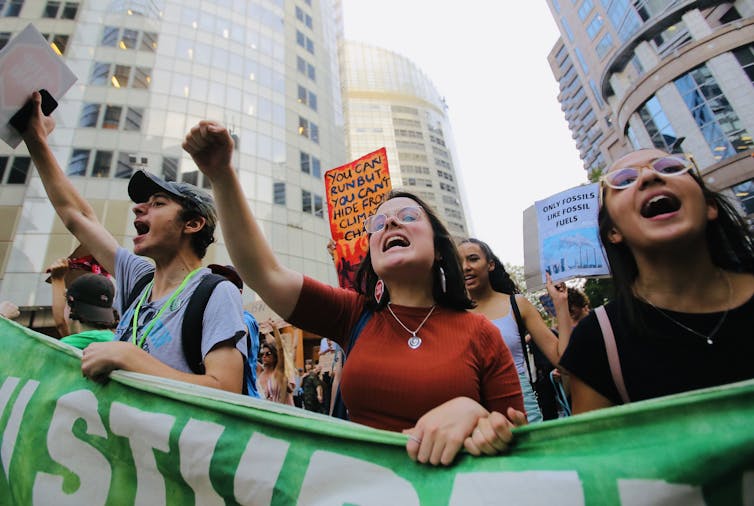
It is difficult to know what to do when governments fail us. But there’s no need to wait until the next election to deal with the climate crisis, we can act now.
An overwhelming majority of Australians want action on climate change. And the federal government’s response to the COVID-19 pandemic shows governments can act decisively and effectively on imminent threats. But on climate action, there is a lack of political will.
So in the absence of federal leadership, what should be done? And who must do what?
Those questions are already being answered by state governments, councils, researchers, entrepreneurs and financiers who understand the climate problem. Their actions are slowing our slide to disaster – but they need others to step up.
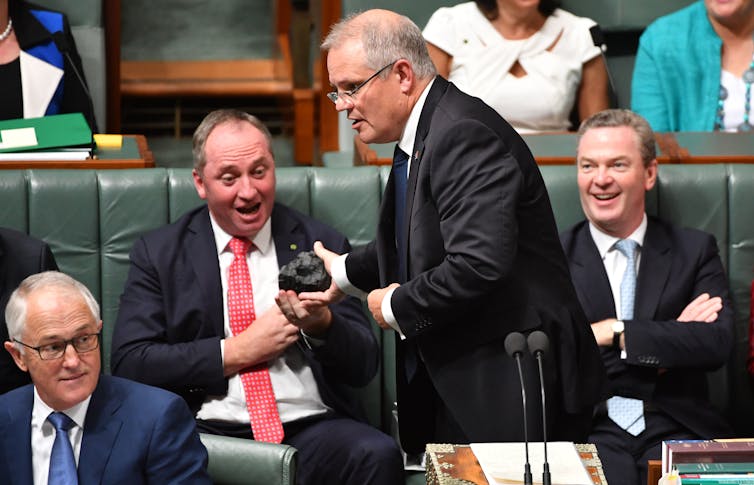
States Are Filling The Gap
Among the most important entities in climate action in Australia are the state and territory governments. The ACT was the first to eliminate fossil fuels for electricity generation. Tasmania is on track to be there by 2022, and has now set a 200% renewable energy target by 2040, with the additional clean energy to be used to produce hydrogen.
South Australia is also set to be powered solely by renewables by the 2030s. These jurisdictions show what can be done in Australia if there’s a political will, and successive governments stick with a plan.
Some larger states are catching up fast. New South Wales has recently gone from being one of the worst performers to among the best. The Berejiklian government has a ten-year plan to reach net-zero emissions by 2050, and the first stage prioritises the uptake of electric vehicles. It will change building codes to make it cheaper and easier to install electric charging points, encourage the uptake of electric vehicles by fleets, and change licensing and parking regulations to encourage their uptake.
If the states worked together to pursue the most ambitious targets and programs, Australia could do its bit to solve the climate problem.
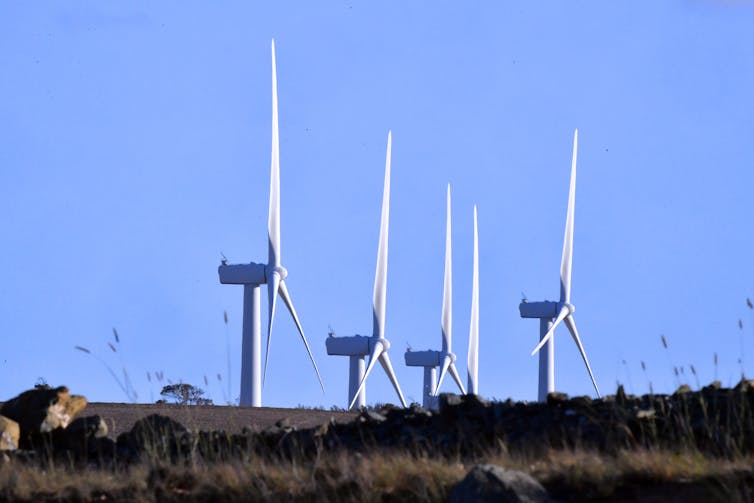
Going Local
Australia’s local councils have become powerhouses of innovative climate solutions. In June 2017 I attended the Climate Council’s Cities Power Partnership at Parliament House in Canberra. Some 34 mayors and councillors attended, and I listened with interest as one after another described the projects they were working on.
The breadth was astonishing, from promoting bulk buys of solar panels for disadvantaged residents to making low-carbon road surfaces at local plants. Many councils were planting trees, assisting with energy efficiency measures or converting waste to energy. Since that first meeting the Cities Power Partnership has grown hugely. It now includes more than 120 local governments, representing half of all Australians.
Read more: People power: everyday Australians are building their own renewables projects, and you can too
It is not just Australia’s local councils forging ahead with climate action. Individual households lead the world in producing clean energy. More than two million households — 21% of the nation’s total — have now installed solar panels. This, of course, was supported by the federal government’s renewable energy target. But it wouldn’t have happened without Australians paying good money for their rooftop solar panels.
Movements aimed at building momentum will doubtless continue. In September 2019, hundreds of thousands marched during the school climate strikes. The movement grew from a one-person protest by Swedish activist Greta Thunberg, which took place just a year earlier. In Australia the crowds were unprecedented, as was their passion.
The demonstrations have had limited impact on the federal government, but people are also organising in different ways. Extinction Rebellion, an group just two years old, is one of the potentially more potent. Its members are committed to breaking the law peacefully. Part of their power lies in the fact that they keep reminding the police, courts and politicians that their actions aim to save everybody’s children, not just their own.
But What Of National Politics?
Action by state governments, councils, individuals and groups will be critical to tackling climate change. But that still leaves the problem of federal parliament.
More pro-climate independents in federal parliament would shift our politics in the right direction. At the last election, voters in the northern Sydney seat of Warringah dispensed with incumbent Tony Abbott, in favour of independent candidate Zali Steggall (who won an astonishing 58% of the two-party preferred vote). It shows what’s possible when traditionally conservative voters get sick of being held to ransom by climate deniers in parliament.
But other deniers in the parliamentary party remain influential. Their modus operandi, as former prime minister Malcolm Turnbull has said, is that of terrorists threatening to blow the place up if they don’t get their way.
Read more: New polling shows 79% of Aussies care about climate change. So why doesn't the government listen?
Getting more independents into parliament will not be easy. The major political parties, which have many millions of dollars to spend at elections, will fiercely oppose any challengers.
But imagine if the Liberal-Nationals were forced to rid themselves of denialists to head off challenges by independents. What if they could once more implement rational, enduring energy and climate policies? Well, we are at a moment in time where this might be possible.
Membership of both the Labor and Liberal parties has dwindled in recent decades. That means a tiny, self-selected portion of Australia’s population chooses the candidates we vote for.
This has exposed the Liberals, in particular, to hijack by climate deniers – given the small membership numbers, it’s not hard for denialist candidates to win preselection. But if party members let these wreckers run the show, Australia will continue on the path to catastrophe.
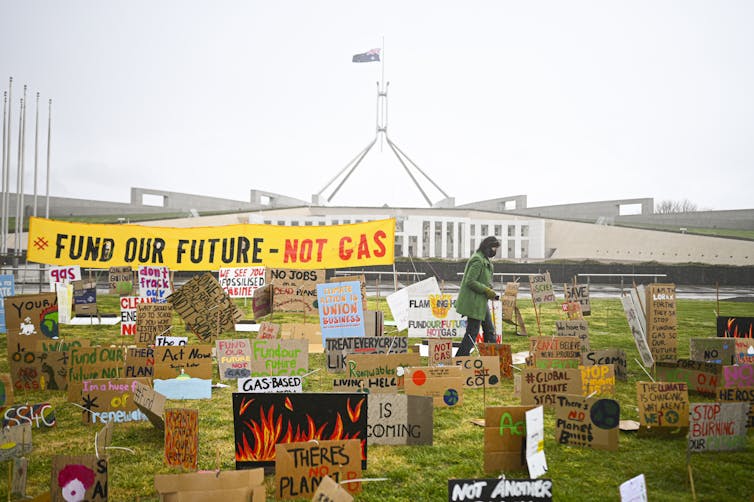
Time To Step Up
Australians have become used to living with governments that don’t serve our interests. Many people are rightly cynical and disengaged from politics. And that’s exactly where the climate deniers would like us to be.
But to effect real change, we must shake free of apathy. New people will have to step up and join those who have been persevering in pushing for climate action for years.
With enough momentum, we can embark on the cure for this most wicked of problems.
This is an edited extract from The Climate Cure: Solving the Climate Emergency in the Era of COVID-19 by Tim Flannery (Text Publishing).
Read more: Distress, depression and drug use: young people fear for their future after the bushfires ![]()
Tim Flannery, Professorial fellow, Melbourne Sustainable Society Institute, University of Melbourne
This article is republished from The Conversation under a Creative Commons license. Read the original article.
Good news from the River Murray: these 2 fish species have bounced back from the Millennium Drought in record numbers
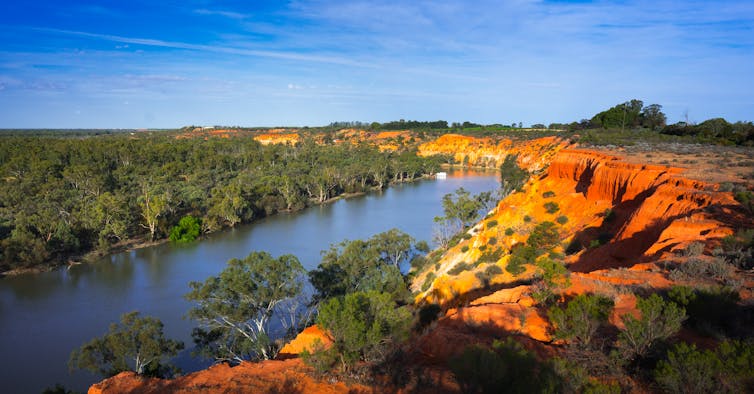
This year marks a decade since the end of the Millennium Drought, when flood waters reached the mouth of the River Murray in 2010. For 1,200 days prior, Australia’s most iconic river had ceased flowing to the sea, causing populations of fish and other aquatic animals to plummet.
In particular, native migratory fish, including congolli (Pseudaphritis urvilli) and pouched lamprey (Geotria australis), were severely impacted by barriers to migration — such as barrages and weirs — and a lack of river flow.
However, our research has shown some clever engineering and increasing volumes of water for the environment are helping congolli and pouched lamprey to bounce back in record numbers.
With native fish in the Murray-Darling Basin just a fraction of what they were before European colonisation, rebuilding populations will be a long process. But learning from successes like this along the way will aid in the journey toward a healthier river.
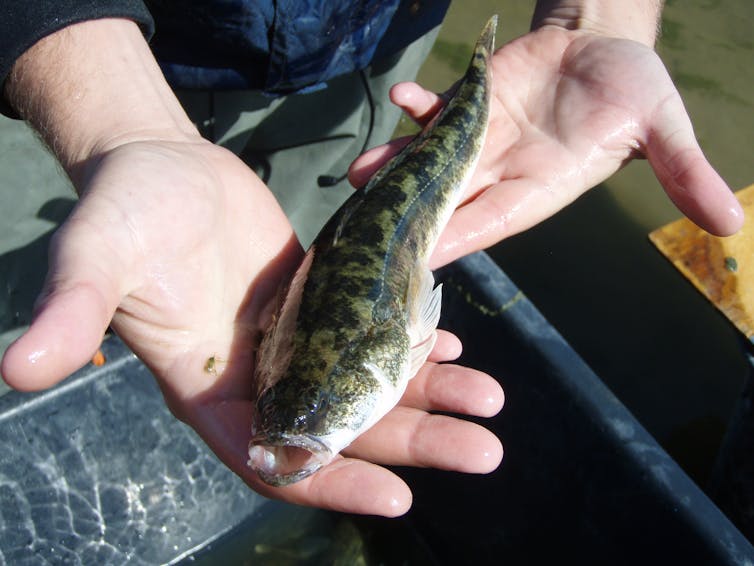
What Happened To Fish In The Millennium Drought?
From 2001 to 2009, south-eastern Australia experienced the most severe drought in recorded history.
Unprecedented low rainfall and water extraction for irrigation and human consumption reduced water flows in the lower Murray by around 70%. Water levels in the Lower Lakes at the terminus of the river system fell to more than one metre below sea level.
To prevent saltwater from the ocean mixing with critical storages of freshwater, tidal barrages (dam-like structures) were closed, and the River Murray was disconnected from the sea.
Read more: What California can learn from Australia’s 15-year millennium drought
This was a big problem for a number of migratory species, including pouched lamprey and congolli, which need to migrate between freshwater and saltwater to complete their lifecycles.
During the Millennium Drought, no lamprey were seen in the Lower Lakes and Coorong, while numbers of juvenile congolli declined. After more than three years of barrage closure, local populations were threatened with extinction.
But in late 2010, both species were saved by major flooding, when the Murray once again flowed to the sea, and abundances have continued to steadily improve over the past decade.
Several management initiatives were also critical in supporting recovery, even through the most recent drought. Notably, the installation of fish ladders and better water management. Fish ladders are water-filled channels with a series of steps that enable fish to swim around or over dams and weirs.

Supporting Fish Migrations
Native fish populations in the Murray-Darling Basin are estimated to be approximately 10% of those pre-European settlement. Barriers to fish movement and altered river flows are two principal causes of decline.
The Murray Barrages were constructed in the 1930s, without consideration of fish passage, and it was 70 years before the first fish ladder was constructed in 2003.
Read more: A good plan to help Darling River fish recover exists, so let's get on with it
In 2020, there are now 11 fish ladders spread across the Murray Barrages, and our research has shown they effectively support vital migrations.
More fish ladders have been built on upstream weirs, together opening more than 2,000 kilometres of the River Murray to fish migration.
However, water must be available to operate the fish ladders, and this is where environmental water plays a role.
In 2009-10, approximately 120 gigalitres of environmental water were delivered across the Basin. By 2017-18, this volume was greater than 1,200 gigalitres and included substantial volumes across the Murray Barrages.
Read more: The Darling River is simply not supposed to dry out, even in drought
This increase has enabled the River Murray to continuously flow to the sea, restoring its natural characteristics, albeit at a significantly reduced volume.
What’s more, water for the environment has supported constant operation of the barrage fish ladders since 2010 — a huge win for lamprey and congolli.
The Bounce Back
From the lows of the Millennium Drought we have so far this year caught a record 101 individual pouched lamprey moving through the barrage fish ladders and proceeding upstream. This is up from last year’s catch of 61 fish.
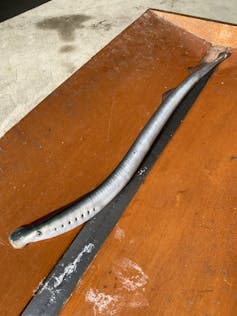
Congolli populuations are also booming. From 2007 to 2010, we sampled a combined total of just over 1,000 congolli. Compare this to the summer of 2014-15, when we sampled more than 200,000 passing through the fishways.
Congolli is now one of the most abundant fish in the Coorong and upstream of the barrages in the Lower Lakes.
What The Rest Of The Basin Can Learn From This
Fish ladders and environmental water have been successful in supporting fish migration at the Murray Barrages, yet across the Murray-Darling Basin, thousands of barriers remain and more are being considered, particularly in the northern Basin.
These barriers can impede the movements of fish that migrate wholly within freshwater, such as golden perch (Macquaria ambigua) and the threatened silver perch (Bidyanus bidyanus). This includes the spawning migrations of adults and downstream dispersal of juveniles.
Mitigating the impacts of existing and new structures on the movement of fish is crucial to restoring native fish populations in the Murray-Darling Basin.
To help restore migratory fish throughout the basin, there must be greater understanding of the movement requirements of all fish life stages, the construction of effective fish ladders, and river flows must be sufficient to facilitate downstream movement, including of eggs and larval fish. The removal of barriers may also be a feasible option.
In any case, after 15 years of experience in the lower River Murray we’ve learnt protecting migratory fish is best achieved when researchers, the community, water managers and river operators collaborate closely. Such partnerships are the bedrock to establishing a healthier river.
Read more: Last summer's fish carnage sparked public outrage. Here's what has happened since ![]()
Brenton Zampatti, Principal Research Scientist, CSIRO and Chris Bice, Research scientist at SARDI
This article is republished from The Conversation under a Creative Commons license. Read the original article.
Photos from the field: these magnificent whales are adapting to warming water, but how much can they take?

Environmental scientists see flora, fauna and phenomena the rest of us rarely do. In this new series, we’ve invited them to share their unique photos from the field.
The start of November marks the end of the whale season in the Southern Hemisphere. As summer approaches, whales that were breeding along the east and west coasts of Australia, Africa and South America will now swim further south to feed around Antarctica.
This annual cycle of whales coming and going has taken place for at least 10,000 years. But rising ocean temperatures from climate change are challenging this process, and my colleagues and I have already seen signs that humpback whales are changing their feeding, migration and breeding patterns to adapt.
As krill stocks decline and ocean circulation is set to change more drastically, climate change remains an unprecedented threat to whales. The challenge now is to forecast what will happen next to better protect them.
Losing Krill Is The Biggest Threat
I’m part of an international team of researchers trying to learn what the next 100 years might look like for humpback whales in the Southern Hemisphere, and how they’ll adapt to changing ocean conditions.
Whales depend on recurring environmental conditions and oceanographic features, such as temperature, circulation, changing seasons and biogeochemical (nutrient) cycles. In particular, these features influence the availability of krill in the Southern Ocean, their biggest food source.
Whales are particularly sensitive to this because they need enormous amounts of food to develop sufficient fat reserves to migrate, give birth and nurse a calf, as they don’t eat during this time.
In fact, models predict declines in krill from climate change could lead to local extinctions of whales by 2100. This includes Pacific populations of blue, fin and southern right whales, as well as fin and humpback whales in the Atlantic and Indian oceans.
Read more: Climate change threatens Antarctic krill and the sea life that depends on it
Still, when it comes to their migration and breeding cycles, recent studies have shown humpback whales can adapt with changes in ocean temperature and circulation at a remarkable level.
Whales Can Adapt To Warming Water, But At What Cost?
In a long term study from the Northern Hemisphere, scientists found the arrival of humpback whales in some feeding grounds shifted by one day per year over a 27-year period in response to small fluctuations in ocean temperatures.
This led to a one-month shift in arrival time, but a big concern is whether they can continue to time their arrival with their prey in the future when the water gets warmer still.
Likewise, in breeding grounds near Hawaii, the number of mother and calf humpback whale sightings dropped by more than 75% between 2013 and 2018. This coincided with persistent warming in the Alaskan feeding grounds these whales had migrated from.
But humpback whales shifting their distribution and behaviour can cause unexpected human encounters, and cause new challenges that weren’t an issue previously.
Research from earlier this year found humpback whales switched to fish as their main prey when the sea surface temperature in the California current system increased in a heatwave. This has been leading to record numbers of entanglements with gear from coastal fisheries.
Read more: I measure whales with drones to find out if they're fat enough to breed
And between 2013 and 2016, we documented hundreds of newborn humpback whales in subtropical and temperate shallow bays on the east coast of Australia, 1,000 kilometres further south from their traditional breeding areas off the Great Barrier Reef.
However, since these aren’t designated calving areas, the newborns aren’t well protected from getting tangled in shark nets or colliding with jet skis or cruise ships.
Protecting Whales
The Whales and Climate Program is the largest project of its kind, combining hundreds of thousands of humpback whale sightings and advanced modelling techniques. Our aim is to advance whale conservation in response to climate change, and learn how it threatens their recovery after decades of over-exploitation by the whaling industry.
Each whale season between June and October, I sail out to the open ocean. This means I have unique opportunities to see and engage with whales, especially during the breeding season. The following photos show some of our breathtaking encounters, and can remind us of our marine ecosystem’s fragile beauty.


During one of our boat-based surveys on the Gold Coast, we encountered this acrobatic humpback whale calf, shown in the photos above. We counted 254 breaches in two hours, making it the record holder of most breaches in our 10 years of observation.
To check on whales’ health, we collect and study the air they exhale through their blow hole (“whale snot”), and measure their size at different times of the year. The photo above shows me tagging a whale with CATs suction cup tags, to collect data on short term changes in their movement patterns.
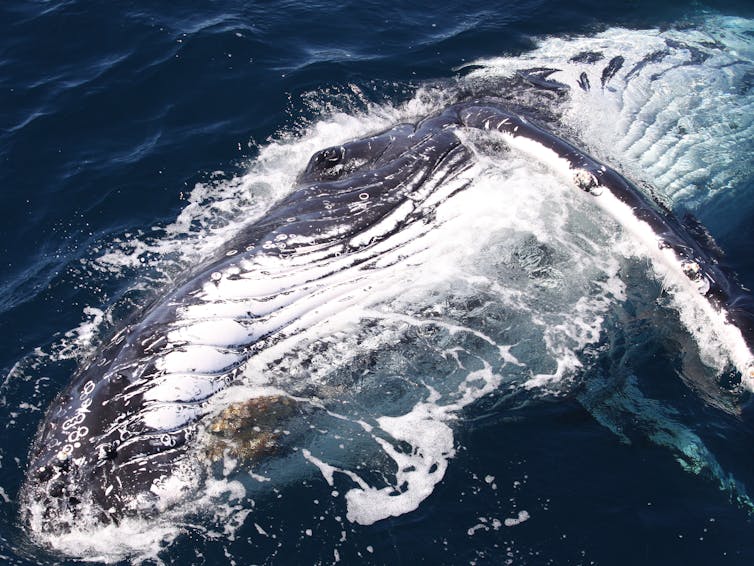
In regions where the whales adapt to ocean changes and, as such, move closer to shore for feeding and shift their breeding grounds, there’s a higher risk of entanglements and other human encounters. This is particularly concerning when they travel outside protected areas.
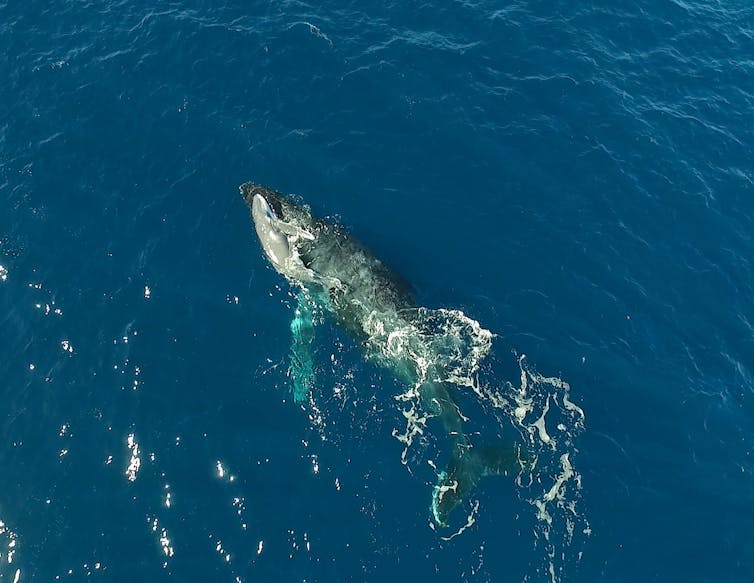
Look closely and you can see a newborn humpback, just one to three days old, resting on its mother’s head.
In the first days of life, baby humpback whales sink easily and aren’t able to stay on the water surface for long. They need their mothers’ support to stay on the surface to breathe.
Once they’ve gained enough fat from the mothers milk they become positively buoyant (meaning they can float), making it easier for them to breathe.

A final note — during one of our land-based whale surveys this year, a keen whale watcher approached us, and we helped him find the whales with our binoculars. I will never forget the joy in his face when he spotted them.
It’s a joy I hope many future generations can experience. To ensure this, we need to understand how we can best protect whales in a changing climate.
Read more: Photos from the field: capturing the grandeur and heartbreak of Tasmania's giant trees ![]()
Olaf Meynecke, Research Fellow in Marine Science, Griffith University
This article is republished from The Conversation under a Creative Commons license. Read the original article.
Tick Population Booming In Our Area
Residents from Terrey Hills and Belrose to Narrabeen and Palm Beach report a high number of ticks are still present in the landscape. Local Veterinarians are stating there has not been the usual break from ticks so far and each day they’re still getting cases, especially in treating family dogs.
To help protect yourself and your family, you should:
- Use a chemical repellent with DEET, permethrin or picaridin.
- Wear light-colored protective clothing.
- Tuck pant legs into socks.
- Avoid tick-infested areas.
- Check yourself, your children, and your pets daily for ticks and carefully remove any ticks using a freezing agent.
- If you have a reaction, contact your GP for advice.
 Shorebird Identification Booklet
Shorebird Identification Booklet
The Migratory Shorebird Program has just released the third edition of its hugely popular Shorebird Identification Booklet. The team has thoroughly revised and updated this pocket-sized companion for all shorebird counters and interested birders, with lots of useful information on our most common shorebirds, key identification features, sighting distribution maps and short articles on some of BirdLife’s shorebird activities.
The booklet can be downloaded here in PDF file format: http://www.birdlife.org.au/documents/Shorebird_ID_Booklet_V3.pdf
Paper copies can be ordered as well, see http://www.birdlife.org.au/projects/shorebirds-2020/counter-resources for details.
Download BirdLife Australia's children’s education kit to help them learn more about our wading birdlife
Shorebirds are a group of wading birds that can be found feeding on swamps, tidal mudflats, estuaries, beaches and open country. For many people, shorebirds are just those brown birds feeding a long way out on the mud but they are actually a remarkably diverse collection of birds including stilts, sandpipers, snipe, curlews, godwits, plovers and oystercatchers. Each species is superbly adapted to suit its preferred habitat. The Red-necked Stint is as small as a sparrow, with relatively short legs and bill that it pecks food from the surface of the mud with, whereas the Eastern Curlew is over two feet long with a exceptionally long legs and a massively curved beak that it thrusts deep down into the mud to pull out crabs, worms and other creatures hidden below the surface.
Some shorebirds are fairly drab in plumage, especially when they are visiting Australia in their non-breeding season, but when they migrate to their Arctic nesting grounds, they develop a vibrant flush of bright colours to attract a mate. We have 37 types of shorebirds that annually migrate to Australia on some of the most lengthy and arduous journeys in the animal kingdom, but there are also 18 shorebirds that call Australia home all year round.
What all our shorebirds have in common—be they large or small, seasoned traveller or homebody, brightly coloured or in muted tones—is that each species needs adequate safe areas where they can successfully feed and breed.
The National Shorebird Monitoring Program is managed and supported by BirdLife Australia.
This project is supported by Glenelg Hopkins Catchment Management Authority and Hunter Local Land Services through funding from the Australian Government’s National Landcare Program. Funding from Helen Macpherson Smith Trust and Port Phillip Bay Fund is acknowledged.
The National Shorebird Monitoring Program is made possible with the help of over 1,600 volunteers working in coastal and inland habitats all over Australia.
The National Shorebird Monitoring program (started as the Shorebirds 2020 project initiated to re-invigorate monitoring around Australia) is raising awareness of how incredible shorebirds are, and actively engaging the community to participate in gathering information needed to conserve shorebirds.
In the short term, the destruction of tidal ecosystems will need to be stopped, and our program is designed to strengthen the case for protecting these important habitats.
In the long term, there will be a need to mitigate against the likely effects of climate change on a species that travels across the entire range of latitudes where impacts are likely.
The identification and protection of critical areas for shorebirds will need to continue in order to guard against the potential threats associated with habitats in close proximity to nearly half the human population.
Here in Australia, the place where these birds grow up and spend most of their lives, continued monitoring is necessary to inform the best management practice to maintain shorebird populations.
BirdLife Australia believe that we can help secure a brighter future for these remarkable birds by educating stakeholders, gathering information on how and why shorebird populations are changing, and working to grow the community of people who care about shorebirds.
To find out more visit: http://www.birdlife.org.au/projects/shorebirds-2020/shorebirds-2020-program
Pittwater Reserves
Aussie Bread Tags Collection Points

Drones As Stinger Spotters
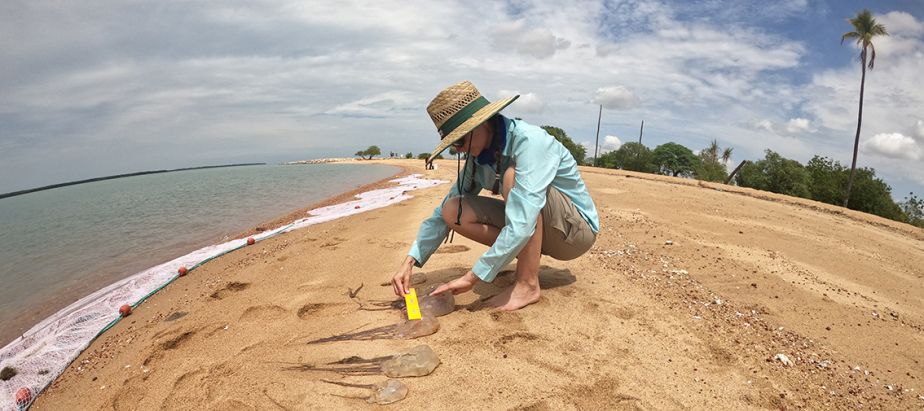
Buffalo Fly Faces Dengue Nemesis
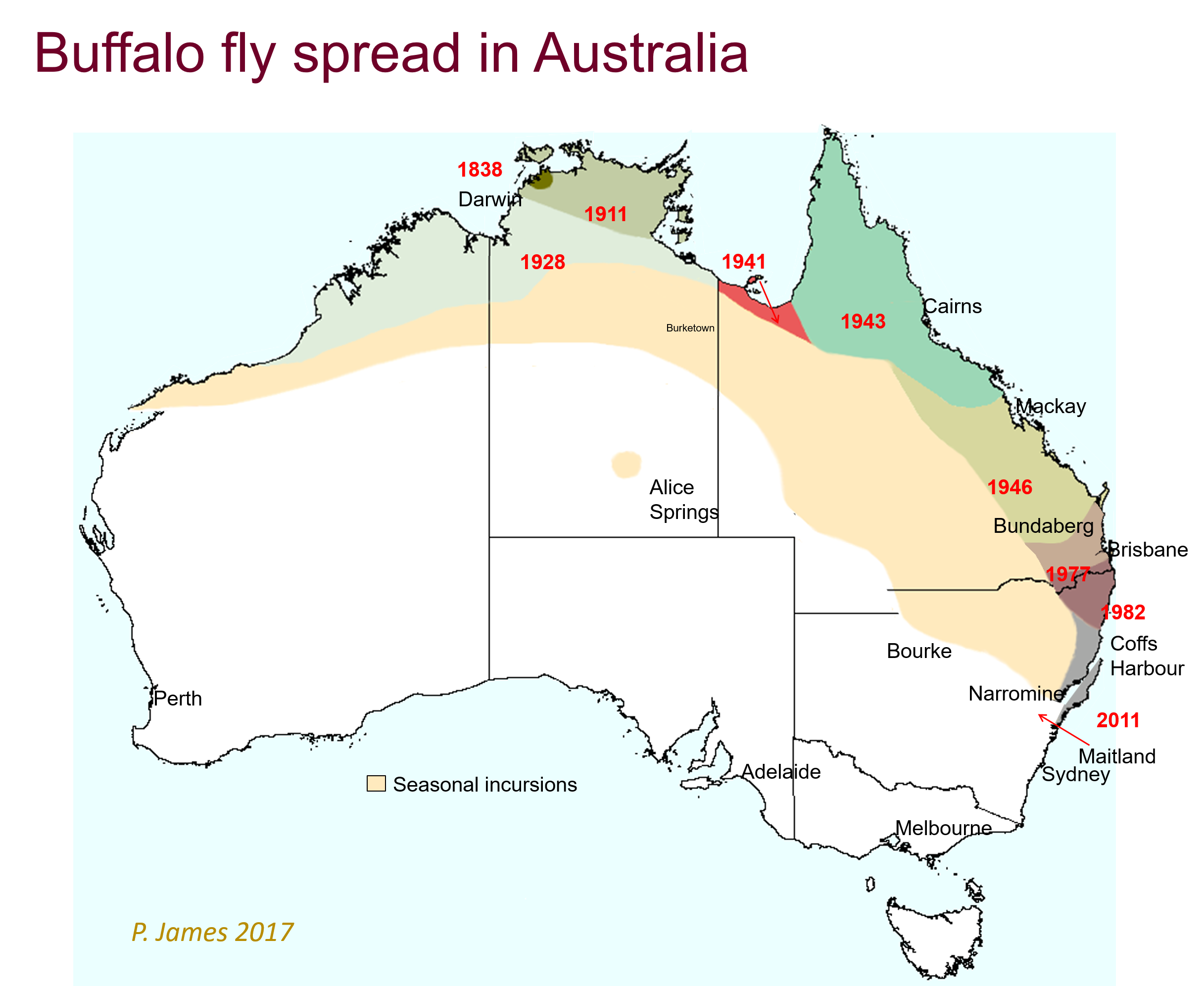
5 ways the Reserve Bank is going to bat for Australia like never before
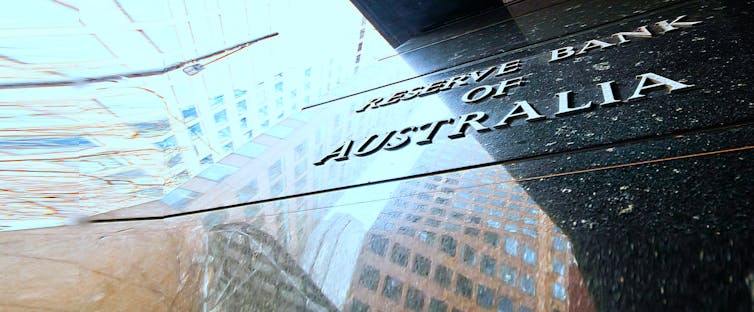
The most important of the five measures the Reserve Bank announced on Tuesday is the one that won’t whirr into place for a very long time.
Others start immediately. On Thursday the bank will wade into the market and start buying up bonds issued by Australian governments.
It’ll buy Commonwealth government bonds with five to seven years left to run on Mondays, Commonwealth bonds with seven to ten years left to run on Thursdays, and bonds issued by state governments on Wednesdays.
It’ll spend about A$5 billion a week, every week for six months until it has unloaded $100 billion.
1. $5 Billion Per Week, Week In, Week Out
As before, when it did this on a more limited scale, it won’t be buying the bonds from the governments that issued them, but from third parties such as super funds and investment managers.
What’s (very) different is that it will be forcing a particular sum of money into their hands.
Its earlier bond buying program (which will continue) spent only as much as was needed to achieve an interest rate target.
The new program will spend a particular sum of created money (the Reserve Bank creates it out of nothing) every week for six months, whatever happens to rates.
Read more: The government has just sold $15 billion of 31-year bonds. But what actually is a bond?
It’ll be true “quantitative easing”, in that it’s the quantity of money that will matter, not the price.
Once in the hands of investors who would really rather own bonds, they’ll have to do something with it, such as investing in a business that employs people. That’s the theory.
As well, with bonds harder to find in Australia, fewer foreigners will move money here to buy them propping up the Australian dollar. That should allow the Australian dollar to fall, making local businesses more competitive against those from overseas. That’s the other part of the theory.
2. Cash Rate Near Zero
And that’s just one of five measures Reserve Bank Governor Philip Lowe announced on Tuesday.
The once-watched cash rate which is the interest rate on unsecured overnight loans between banks, was cut to 0.25% in March amid hope that 0.25% was so low it wouldn’t need to be cut further.
Within days the actual cash rate at which banks transact business had fallen a good deal lower because, at 0.25%, many more of them wanted to lend than borrow.
Target cash rate versus actual
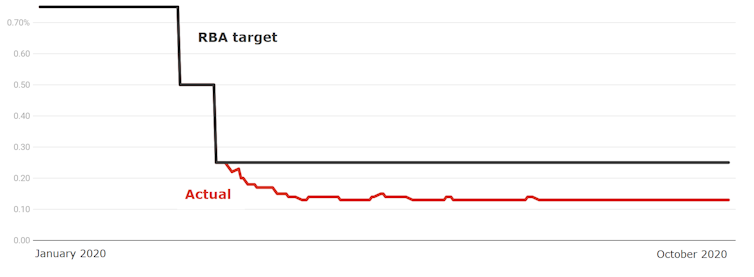
When it settled at about 0.14% the Reserve Bank didn’t bother to intervene to push it back up.
The new target of 0.10% will give banks almost no return for lending to each other and make borrowing from each other almost costless.
The separate rate for cash on deposit with the Reserve Bank will fall from 0.10% to as good as zero, 0.01%
Read more: More than a rate cut: behind the Reserve Bank's three point plan
If the cuts were passed on in full to bank customers they would cut the standard variable mortgage rate from around 3.2% to 3%.
The rate on new mortgages would slide from 2.7% to 2.5%. The rates on customer’s deposits, already near zero, would fall further.
3. Bond Rate To 0.10%
The Reserve Bank had been targeting a three-year bond rate of 0.25%, buying as many bonds as were needed to keep it there. It’ll cut that target to 0.10% in line with its cut in the cash rate, buying as many bonds as are needed to get and keep the rate at 0.10%.
Three-year bonds are used to fund fixed three-year mortgages and personal and business loans. All will become even cheaper.
This bond-buying program, which will target the rate, is completely separate from, and additional to, the $5 billion per week the bank will spend buying longer-term bonds week in, week out.
4. Near-Free Loans To Banks
Since March the government has been advancing money to private banks for three years for just 0.25%.
The more they expand their lending to business (and especially to small and medium sized business) the more it will it will advance them in accordance with a formula.
The formula won’t change but the rate will. From Thursday new loans under the program will be offered to banks for just 0.10%.
5. A Commitment With Teeth
Until now, the bank has been fuzzy about the circumstances in which it will eventually change course and start pushing rates back up.
Its commitment was weaker than it sounded
the board will not increase the cash rate target until progress is being made towards full employment and it is confident that inflation will be sustainably within the 2–3 per cent target band
Whether or not “progress is being made” is subjective.
The commitment allowed the bank to assert that progress was being made and reverse course at its convenience.
Whether or not the bank was “confident” that inflation would be sustainably within its target band was even more subjective.
One Word, Big Change
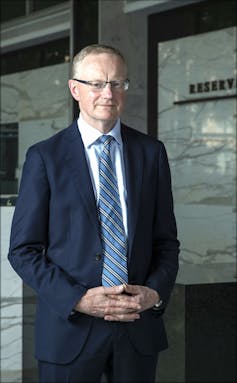
On Tuesday, Governor Philip Lowe ditched the fuzziness and replaced it with something measurable.
The board will not increase the cash rate until “actual inflation” is sustainably within the 2% to 3% target range.
“For this to occur, wages growth will have to be materially higher than it is currently. This will require significant gains in employment and a return to a tight labour market.”
So prepared is the bank to bat for Australia that it won’t stop until there’s a “tight labour market”.
And it has used the word “actual”.
No longer will the bank need to merely see “progress towards” an inflation rate of 2% to 3%. It will have to be faced with an “actual” inflation rate of 2% to 3%.
Low Rates For A Long, Long Time
Australia’s inflation rate hasn’t been sustainably between 2% and 3% for more than half a decade, and it is likely to be at least that long again until it gets back there, if ever.
Governor Lowe said the bank’s forecasts, to be published this Friday, will put the inflation rate at 1%. It’ll put wage growth at the lowest on record, less than 2%.
By tying the future of the cash rate to an actual inflation rate rather than a feeling about the inflation rate, Governor Lowe is tying the bank to a cash rate of close to zero for as far anyone can see.
It means that not only will it be as cheap as it has ever been to borrow (for a mortgage, a business, for anything) it means there’s no risk of that suddenly changing because the bank gets rush of blood to the head.
It’s about the future, but it matters now.![]()
Peter Martin, Visiting Fellow, Crawford School of Public Policy, Australian National University
This article is republished from The Conversation under a Creative Commons license. Read the original article.
How a simple brain training program could help you stay away from alcohol

Around one in five Australians will develop an alcohol use disorder, such as dependence, during their lifetime.
Reports suggest some people have been drinking more during the COVID pandemic, potentially putting themselves at greater risk of becoming dependent.
While some people will seek treatment for problem drinking, more than half of patients who go through inpatient withdrawal treatment, or detox, relapse within two weeks of discharge.
My team and I have found a new form of brain training can have positive results for people going through detox.
The Conscious Brain Versus The Subconscious Brain
When we want to change a behaviour like alcohol use, we might use our conscious brain to think about the benefits quitting will bring, such as improved sleep and being sharper in the mornings. We might reflect on the downsides if we continue to drink, like the unwanted calories, the cost, and the risk of harm to our physical or mental health.
But despite these conscious thought processes, we still may find ourselves reaching into the fridge for a beer, or pouring a glass of wine, as though on “autopilot”. This is because our subconscious brain is in action, driving the desire to drink alcohol.
Over time, when we drink frequently, alcohol cues such as places, sights, smells and social situations that remind us of drinking subconsciously capture our attention and drive impulses to drink. This tendency is called cognitive bias.
In Australia, we’re continually bombarded with alcohol cues, whether from bottle shops, pubs, or advertising. Recent research found we’re targeted by an alcohol advertisement as often as every 35 seconds on social media.
But by reducing cognitive bias towards alcohol cues, we can increase the likelihood our behaviour will be driven by our conscious rather than our subconscious brain.
Read more: Does brain training work? That depends on your purpose
Training Our Subconscious Brain
A relatively new form of brain training that directly targets cognitive biases is showing promising results in treating alcohol use disorders.
Cognitive bias modification is a computerised brain-training program that trains people to repeatedly “avoid” alcohol-related cues, and to “approach” neutral or positive ones.
Using a joystick, the user repeatedly pushes away pictures of alcohol, and pulls healthier alternatives, such as bottled water, towards them. By practising this over and over again, the avoidance of alcohol cues becomes automatic, thereby disabling the autopilot response to these cues.
European researchers have shown that when added to a residential rehabilitation program, cognitive bias modification reduced rates of relapse to drinking by 8-13% 12 months after treatment.
Cognitive bias modification is delivered in several residential rehabilitation facilities in Germany, where it’s recommended in treatment guidelines.
It’s not yet available in Australia.
What We Did
Our study, published today in JAMA Psychiatry, was a randomised control trial with 300 patients from four alcohol withdrawal units in Melbourne.
Roughly half were allocated to the intervention group, to receive one 15-minute session of cognitive bias modification a day for four consecutive days during their week-long detox treatment. The other half were allocated to a control group and received a pretend version of the training.
Before the treatment, participants generally had an automatic tendency to approach alcohol cues with the joystick. But we found the cognitive bias modification generally shifted this to an automatic tendency to avoid them.
Most importantly, cognitive bias modification increased rates of abstinence by 17% at two weeks after discharge. Some 63.8% of the brain-training group reported no alcohol use, compared with 46.8% of the control group.
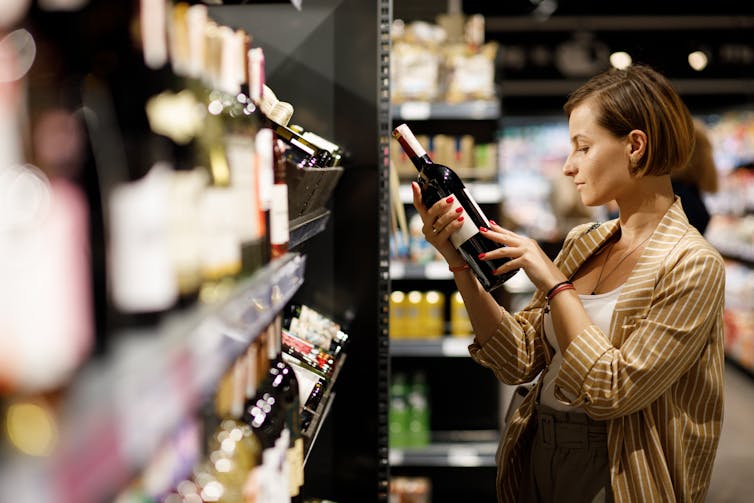
The main limitation of our study was that alcohol use after treatment was self-reported. The vast geographical catchment of the withdrawal units meant we had to do follow-up interviews over the phone, so we couldn’t use tools like breathalysers or blood tests to verify abstinence.
Nonetheless, we feel confident cognitive bias modification can optimise outcomes for patients receiving treatment for alcohol addiction. The training is simple, safe, easy to implement and cost-effective, and we believe it should be routinely offered as part of inpatient withdrawal treatment in Australia.
Now We’re Trialling An App Version
Inpatient treatment services are geared towards people with moderate to severe alcohol use disorders. But these people represent only a fraction of those who want to reduce or stop drinking.
Recognising this, we’ve developed a smartphone version of cognitive bias modification called SWiPE. It enables users to personalise their training by selecting the alcohol beverages or brands they wish to avoid.
At the same time, the app aims to strengthen motivation for quitting or reducing alcohol use by training users to repeatedly swipe towards meaningful, goal-related images they select from their photo libraries (for example, of family, friends, hobbies, travel, and so on).
Read more: Thinking about taking a break from alcohol? Here's how to cut back or quit
We’re currently running a trial to test whether SWiPE effectively reduces alcohol consumption and craving. Early results, not yet peer-reviewed or published, are encouraging.
In today’s culture where we make instantaneous decisions with the swipe of a finger, if it proves to be effective, this app could be adapted to weaken the subconscious drivers of other unhealthy habits we wish to break, such as smoking and the overconsumption of unhealthy foods.![]()
Victoria Manning, Associate Professor, Monash University
This article is republished from The Conversation under a Creative Commons license. Read the original article.
Program Helps Skill Up School Leavers Over Summer
The NSW Government's Skilling for Recovery program offers fee-free training places for school leavers, young people and job seekers.
Hundreds of fee-free training courses are now available for school leavers, young people and job seekers, as part of the NSW Government’s Skilling for Recovery initiative.
Premier Gladys Berejiklian said the courses came from the $320 million committed to delivering 100,000 fee-free training places across the state.
“There are more than 100,000 fee-free training places available for people in NSW as the workforce looks to reskill, retrain and redeploy in a post-COVID-19 economy,” Ms Berejiklian said.
“It doesn’t matter if you are a school leaver or looking for a new career path, I encourage everyone impacted by the pandemic to see what training options are available to them.”
Minister for Skills and Tertiary Education Geoff Lee said enrolments were now open for in-demand skills leading to career pathways in areas such as aged care, nursing, trades, IT, community services, logistics and accounting.
“We are not training for the sake of training, we are training for real jobs with real futures and equipping the people of NSW with the skills they need to thrive in a post-pandemic economy,” Mr Lee said.
“There are hundreds of providers right around NSW who are ready to deliver this important training.”
As part of this Skilling for Recovery initiative, school leavers have the unique opportunity to experience a range of skills to find out what suits their passions using the Summer Skills program.
Minister for Education Sarah Mitchell said some Year 12 school leavers were still deciding what they wanted to do next.
“In designing the Summer Skills program, the NSW Government has ensured the training on offer is aligned to local industry needs,” Ms Mitchell said.
“We need to provide opportunities that help the 2020 Year 12 school leaver cohort to find their feet during these uncertain times. That’s why we’re delivering practical, bite-sized and fee-free training opportunities this summer.”
The Summer Skills offered will cover a range of industries including agriculture, construction, conservation, fitness, engineering, coding, communication and digital literacy.
You can find further details of the courses on offer as part of Skilling for Recovery and the Department of Education Summer Skills program on the respective websites.
Curious Kids: how can we concentrate on study without getting distracted?

How can we concentrate on a particular thing (like studies) without getting distracted? Melvina, aged 14
Thanks for this great question, Melvina!
Many students are probably wondering the same thing as end-of-year assessments approach.
To concentrate best we need to resist distractions. To do this, it helps if you know what concentration looks like.
What Is Concentration?
When you concentrate, you direct or focus your thinking. Imagine your focus is like a torch beam.
This torch beam needs energy, which comes from your concentration. So we can think of concentration as the “mental energy” or “thinking petrol” your brain needs to focus.
Read more: Curious Kids: Is homework worthwhile?
We know it’s important to concentrate to get the best results from a project or task. But, with distractions everywhere, we also know how hard it can be.
So what distractions should we look out for?
Deal With Physical Distractions
These are distractions in your environment. It’s a good idea to take steps to reduce them.
First, try to adjust the amount of light and noise to a level that works best for you.
This might mean getting rid of excessive background noise, or quietening it to a level that helps you concentrate. The level that works best for you depends on your personality, the type of noise and how demanding the task you’re concentrating on is.
When it comes to lighting, for most people, brighter white lighting helps concentration. But, as with background sound, there’s no single rule that works for everyone.
Read more: Curious Kids: is it OK to listen to music while studying?
It can also help to keep your study space tidy and remove any items that could distract you, like your mobile phone.

Thoughts And Feelings Can Be Pretty Distracting Too
If you find yourself thinking of things you’d rather be doing than the task at hand, take a moment to consider what you’ll do after you’ve completed the task, and how much more you’ll enjoy them because of what you’ve achieved.
Read more: Curious Kids: Why does English have so many different spelling rules?
Feelings can be pretty distracting too.
If you feel worried about how people will respond to what you produce, like an essay or presentation, you might be hesitant to get started. To manage this, try noting how a task or topic fits with what you already know, or remind yourself of a time you got through a similar task.
There are a few things you can do before, during and after a task to help too.
How To Manage Distractions
When you start a study session, it’s useful to:
decide what you want to get from the activity. What will the outcome look like?
set yourself up so you can see your computer screen or books without straining your body
remember what you already know about the topic or the task
plan the steps you could take to complete the task.
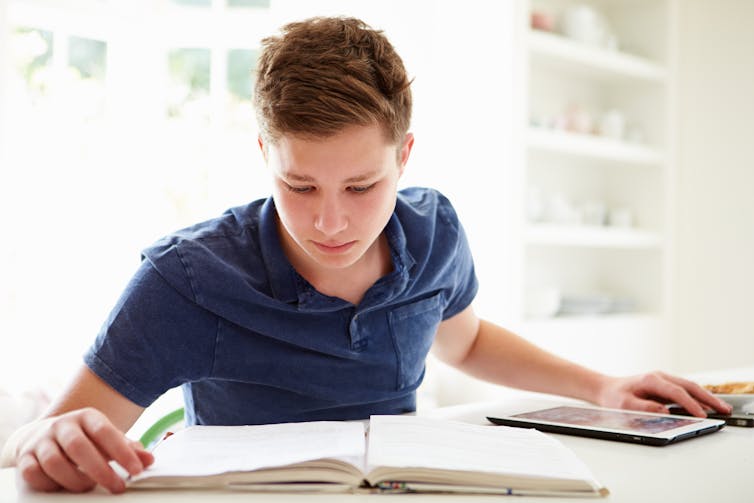
As you work through the topic or the task, it’s helpful check your progress. Note what you’ve achieved so far. Are you moving towards your goal or do you need to change direction?
This helps you deal with distractions while you’re learning.
How To Beat Distractions
Towards the end of a task, review what you’ve learnt and store it in memory. This allows you to get around distractions that occurred during the learning.
Give this a go:
say what you know now that you didn’t know earlier
say how your new understanding has changed or added to what you knew
feel positive about what you know now. Congratulate yourself on what your brain has done. The positive feeling helps you remember it better in the future
imagine yourself remembering and using the main ideas in the future.
When you store your new understanding like this, you can use it more easily in the future to concentrate and to get around distractions.
Hello, curious kids! Have you got a question you’d like an expert to answer? Ask an adult to send your question to curiouskids@theconversation.edu.au![]()
John Munro, Professor, Faculty of Education and Arts, Australian Catholic University
This article is republished from The Conversation under a Creative Commons license. Read the original article.
Children's views should be taken into account when designing urban space

Children see the world in a different way to adults, but urban planning policies rarely take this into account. By focusing on adult needs and views, children are often planned out of our public spaces – and their needs are relegated to specific areas such as playgrounds.
This can even breach their human rights. Article 12 of the UN Convention on the Rights of the Child gives children the right to participate in the matters that affect them, while Article 15 gives them the right to gather and organise their own activities, and Article 31 the right to play, rest and leisure.
Listening to children and valuing their experiences can also help us take a more imaginative approach to urban space. When we do this we have opportunities to improve public spaces for everyone.
Listening To Children
In my PhD research, I worked with 60 primary school children (ages 9-12) in a Scottish city to explore how they view their local environment, and what changes they want to see. We co-produced a child-centric vision that could be compared and contrasted with the traditional planning-based approach contained in a local development plan.
For my participants, the ability to walk, cycle and socialise locally and safely were top priorities. They also favoured increasing access to and experiences in nature, as well as increasing the amount of colour in the built environment. Sports facilities were also very important, as were places where children could see animals, such as zoos and city farms.
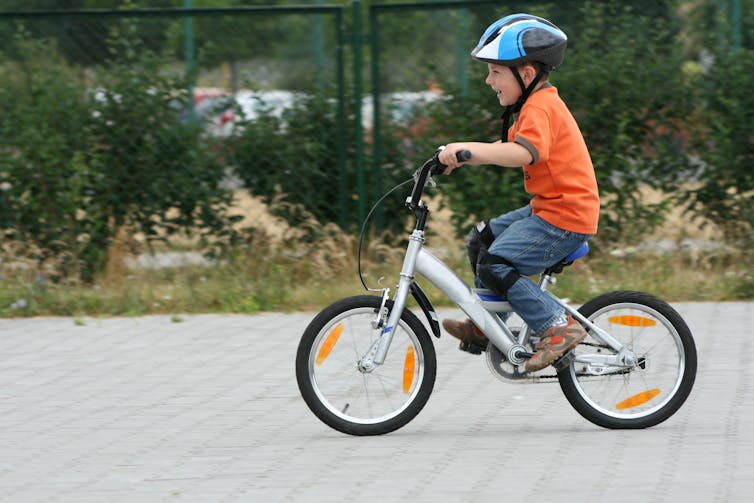
Many of the children had very limited independence, and relied on adults to take them almost everywhere. Some favoured the convenience of being driven, but all disliked the pollution and lack of safety they felt in an area with many busy roads. Children that were mostly driven to places also struggled more to read local maps and understand how different areas connected.
Meanwhile, the city’s local development plan focused on more direct economic considerations. These included designating areas for different types of new housing, employment opportunities, and ensuring efficient use of transport infrastructure.
Although the plan did support the idea of more local walking and cycling, it did not contain specific proposals to enhance it. It also mentioned children only in regard to parks, playgrounds, schools and childcare provision.
Interestingly, the children I worked with generally found the local playground boring and aimed at smaller children – even though the local authority officially designated it as suitable for children up to age 13.
The children also reported conflict between the way they and older children like to use the playground and neighbouring skate park. They thought this conflict would be reduced if they weren’t right next to each other, and if there was space for younger children to use their scooters on the skate park.
Though the park was still one of their favourite places, the children also talked about the rules they have to follow there. Some found that they were told off by adults for doing things they considered reasonable, such as just hanging out.
Taking Guidance
Another piece of research I led confirms that children are rarely considered in the UK’s national planning policies either. Explicit mentions are generally limited to parks, playgrounds, schools and childcare. Policies relating to community engagement also often exclude the importance of hearing children’s views, or guidance on how to seek them.
The absence is longstanding. It is most stark in national English and Northern Irish planning policy as opposed to Wales and Scotland which have made some progress in recent years.
For instance, both Wales and Scotland now look to assess the sufficiency of children’s play opportunities in local areas. There are also promising signs emerging from local areas across the UK. A UNICEF child-friendly cities and communities scheme is one example, which is being implemented in locations such as Aberdeen, Cardiff and Liverpool.
Much of the difference between children and adults’s views on urban space comes down to experience. Children tend to judge and understand their world as they encounter it, and are not tied to existing norms and the status quo in the same way adults are.
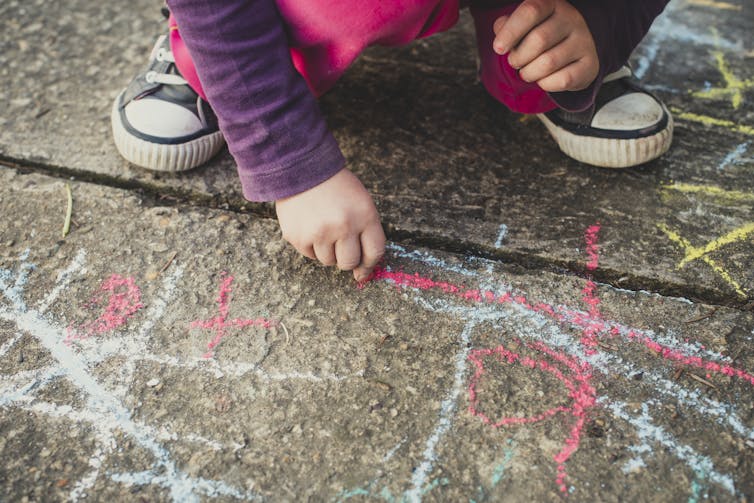
Adults are more likely to favour order and efficiency, while children are more likely to be comfortable with informality and unstructured activity. For example, adults might find leftover or abandoned spaces wasteful or unsightly – but for children, they provide ample opportunity for exploration.
Understanding that there is value in leftover and wild space could improve opportunities for children to play and explore locally. It also reminds us that when we seek to order and formalise space, we prioritise particular ideals that may not be shared by everyone. For instance, in the case of the local area in my PhD research, the local park was half the size of the local golf course.
Taking a child-centric view of space opens possibilities for constructive dialogue on what listening to and valuing children brings all of us. We have the opportunity to reflect on what we want for our children. Whether or not our public space can provide space for them to thrive, is likely to have broader implications now and in the future.![]()
Jenny Wood, Research Associate, Institute for Social Policy, Housing and Equalities Research, Heriot-Watt University
This article is republished from The Conversation under a Creative Commons license. Read the original article.
315 nuclear bombs and ongoing suffering: the shameful history of nuclear testing in Australia and the Pacific
Tilman Ruff, University of Melbourne and Dimity Hawkins, Swinburne University of TechnologyAboriginal and Torres Strait Islander people should be aware this article contains the name of a deceased person.
The Treaty on the Prohibition of Nuclear Weapons received its 50th ratification on October 24, and will therefore come into force in January 2021. A historic development, this new international law will ban the possession, development, testing, use and threat of use of nuclear weapons.
Unfortunately the nuclear powers — the United Kingdom, France, the United States, Russia, China, Israel, India, Pakistan and North Korea — haven’t signed on to the treaty. As such, they are not immediately obliged to help victims and remediate contaminated environments, but others party to the treaty do have these obligations. The shifting norms around this will hopefully put ongoing pressure on nuclear testing countries to open records and to cooperate with accountability measures.
For the people of the Pacific region, particularly those who bore the brunt of nuclear weapons testing during the 20th century, it will bring a new opportunity for their voices to be heard on the long-term costs of nuclear violence. The treaty is the first to enshrine enduring commitments to addressing their needs.
From 1946, around 315 nuclear tests were carried out in the Pacific by the US, Britain and France. These nations’ largest ever nuclear tests took place on colonised lands and oceans, from Australia to the Marshall Islands, Kiribati to French Polynesia.
The impacts of these tests are still being felt today.
All Nuclear Tests Cause Harm
Studies of nuclear test workers and exposed nearby communities around the world consistently show adverse health effects, especially increased risks of cancer.
The total number of global cancer deaths as a result of atmospheric nuclear test explosions has been estimated at between 2 million and 2.4 million, even though these studies used radiation risk estimates that are now dated and likely underestimated the risk.
The number of additional non-fatal cancer cases caused by test explosions is similar. As confirmed in a large recent study of nuclear industry workers in France, the UK and US, the numbers of radiation-related deaths due to other diseases, such as heart attacks and strokes, is also likely to be similar.
‘We All Got Crook’
Britain conducted 12 nuclear test explosions in Australia between 1952 and 1957, and hundreds of minor trials of radioactive and toxic materials for bomb development up to 1963. These caused untold health problems for local Aboriginal people who were at the highest risk of radiation. Many of them were not properly evacuated, and some were not informed at all.
We may never know the full impact of these explosions because in many cases, as the Royal Commission report on British Nuclear Tests in Australia found in 1985: “the resources allocated for Aboriginal welfare and safety were ludicrous, amounting to nothing more than a token gesture”. But we can listen to the survivors.
Read more: Sixty years on, the Maralinga bomb tests remind us not to put security over safety
The late Yami Lester directly experienced the impacts of nuclear weapons. A Yankunytjatjara elder from South Australia, Yami was a child when the British tested at Emu Field in October 1953. He recalled the “Black Mist” after the bomb blast:
It wasn’t long after that a black smoke came through. A strange black smoke, it was shiny and oily. A few hours later we all got crook, every one of us. We were all vomiting; we had diarrhoea, skin rashes and sore eyes. I had really sore eyes. They were so sore I couldn’t open them for two or three weeks. Some of the older people, they died. They were too weak to survive all the sickness. The closest clinic was 400 miles away.
His daughter, Karina Lester, is an ambassador for the International Campaign to Abolish Nuclear Weapons in Australia, and continues to be driven by her family’s experience. She writes:
For decades now my family have campaigned and spoken up against the harms of nuclear weapons because of their firsthand experience of the British nuclear tests […] Many Aboriginal people suffered from the British nuclear tests that took place in the 1950s and 1960s and many are still suffering from the impacts today.
More than 16,000 Australian workers were also exposed. A key government-funded study belatedly followed these veterans over an 18-year period from 1982. Despite the difficulties of conducting a study decades later with incomplete data, it found they had 23% higher rates of cancer and 18% more deaths from cancers than the general population.
An additional health impact in Pacific island countries is the toxic disease “ciguatera”, caused by certain microscopic plankton at the base of the marine food chain, which thrive on damaged coral. Their toxins concentrate up the food chain, especially in fish, and cause illness and occasional deaths in people who eat them. In the Marshall Islands, Kiritimati and French Polynesia, outbreaks of the disease among locals have been associated with coral damage caused by nuclear test explosions and the extensive military and shipping infrastructure supporting them.
Pacific survivors of nuclear testing haven’t been focused solely on addressing their own considerable needs for justice and care; they’ve been powerful advocates that no one should suffer as they have ever again, and have worked tirelessly for the eradication of nuclear weapons. It’s no surprise independent Pacific island nations are strong supporters of the new treaty, accounting for ten of the first 50 ratifications.
Negligence And Little Accountability
Some nations that have undertaken nuclear tests have provided some care and compensation for their nuclear test workers; only the US has made some provisions for people exposed, though only for mainland US residents downwind of the Nevada Test Site. No testing nation has extended any such arrangement beyond its own shores to the colonised and minority peoples it put in harm’s way. Nor has any testing nation made fully publicly available its records of the history, conduct and effects of its nuclear tests on exposed populations and the environment.
These nations have also been negligent by quickly abandoning former test sites. There has been inadequate clean-up and little or none of the long-term environmental monitoring needed to detect radioactive leakage from underground test sites into groundwater, soil and air. One example among many is the Runit concrete dome in the Marshall Islands, which holds nuclear waste from US testing in the 1940s and 50s. It’s increasingly inundated by rising sea levels, and is leaking radioactive material.
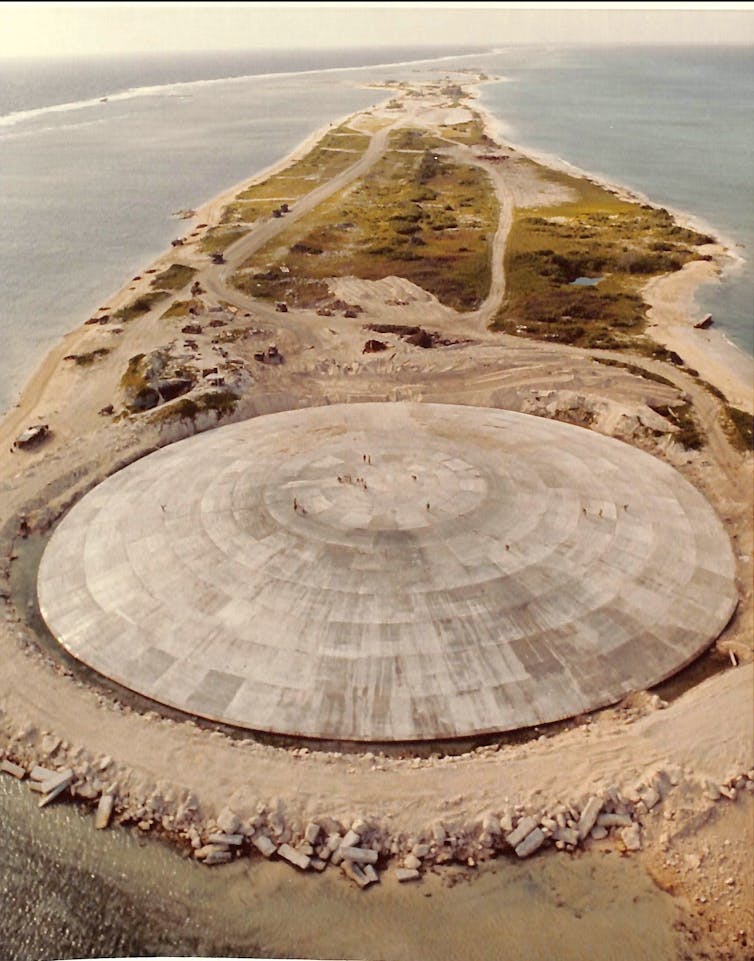
The treaty provides a light in a dark time. It contains the only internationally agreed framework for all nations to verifiably eliminate nuclear weapons.
It’s our fervent hope the treaty will mark the increasingly urgent beginning of the end of nuclear weapons. It is our determined expectation that our country will step up. Australia has not yet ratified the treaty, but the bitter legacy of nuclear testing across our country and region should spur us to join this new global effort.![]()
Tilman Ruff, Associate Professor, Education and Learning Unit, Nossal Institute for Global Health, School of Population and Global Health, University of Melbourne and Dimity Hawkins, PhD Candidate, Swinburne University of Technology
This article is republished from The Conversation under a Creative Commons license. Read the original article.
This tiny amphibian that outlived the dinosaurs provides the earliest example of a rapid-fire tongue
Joseph Bevitt, Australian Nuclear Science and Technology OrganisationAlbanerpetontids, or “albies” for short, are the cute little salamander-like amphibians you’ve likely never heard of.
Now extinct, Albies had a dream run. They’d been around since the Middle Jurassic around 165 million years ago, and probably even earlier. They lived through the age of dinosaurs (and saw out their extinction), then lived through the rise of the great apes, before quietly disappearing about 2.5 million years ago.
Albie fossils are scattered across continents, including in Japan, Morocco, England, North America, Europe and Myanmar. But until recently, we knew relatively little about what they looked like or how they lived.
New research by my colleagues and I, published today in Science, reveals these amphibians were the earliest known creatures to have rapid-fire tongues. This also helps explain why albies were once misidentified as chameleons.
A Miniature Marvel Uncovered
The reason albies remained largely elusive until recently is because they were tiny. Their slight, fragile bones are usually found as isolated jaw and skull fragments, making them hard to study.
The first almost complete albie specimen was found in the wetland environment deposits of Las Hoyas, Spain, and reported in 1995. Even though it was squashed flat, it was enough for palaeontologists to conclude albies were unlike any living salamander or any other amphibian.
They were completely covered in scales like reptiles, had highly flexible necks like mammals, an unusual jaw joint and large eye sockets suggesting good vision. Why were albies so unique?
Read more: Meet the super salamander that nearly ate your ancestors for breakfast
Mistakes Do Happen
The answer partly came to light in 2016, when a group of researchers published a paper demonstrating the diversity of lizards found in the Cretaceous forests of what is now Myanmar.
They presented a dozen tiny 99-million-year-old “lizards”, all preserved in amber. Some were even found with soft tissue remains such as skin, claws and muscles, still attached within the fossilised tree resin.
The researchers used “micro-CT” technology to digitally excavate and study the specimens in detail. This involved using 3D imaging to digitally remove the fossil from the amber and study it on a computer — a technique that avoids the risk of physically damaging the fossil.
They noticed one small, juvenile specimen had a long rod-shaped tongue bone. It was identified as the earliest known chameleon: a remarkable discovery! Or was it?
Alas, mistakes do happen in science. As lizard experts, the researchers had interpreted their results through this lens. It took the keen eye of Susan Evans, a professor of vertebrate morphology and palaeontology at University College London, to recognise this particular “lizard” was actually a misidentified albie.
A Tongue-Tying Revelation
Some time later, Sam Houston State University assistant professor Juan Daza spotted another unbelievable specimen among a collection of fossils preserved in Burmite amber, ethically sourced from Myanmar’s Kachin state.
It was an adult version of the juvenile albie Evans identified. Needing higher-resolution 3D images, the sample was sent to me to study at the Australian Nuclear Science and Technology Organisation’s Australian Synchrotron in Melbourne.
Named after a class of mythical spirits responsible for guarding natural treasures, Yaksha, and the person who discovered the fossil, Adolf Peretti (founder of the non-profit Peretti Museum Foundation) — the Yaksha perettii specimen was an entire skull trapped in golden amber.

Quick Hits To Unsuspecting Prey
Its features that stood out were a long bone projecting back out of the mouth and soft tissue remains, including part of the tongue, jaw muscles and eyelids. By sheer luck, the soft tissue remains proved the long bone in the mouth was directly attached to the tongue.

In other words, Y. perettii was a predator armed with an incredible weapon: a specialised ballistic tongue that fired at lightning speed to capture prey — just as chameleons do today. It’s no wonder the original juvenile, only 1.5 centimetres long, was initially mistaken for a chameleon.
Modern chameleons have accelerator muscles in their tongues that lock in stored energy. This lets them fire their tongues at speeds of up to 100 kilometres per hour in just a fraction of a second.
We believe albies’ projectile tongues were just as fast, used to great effect while sitting motionless in trees or on the ground. If so, this also explains why albies had unusual jaw joints, flexible necks and large, forward-facing eyes. All these traits would have made up their predator toolkit.
Tree Sap Turned To Iridescent Amber
Despite these remarkable new insights, however, many mysteries of albanerpetontids remain. For instance, how exactly are they related to other amphibians? How did they survive for so long, only to die out relatively recently?
We’ll need more intact specimens to answer these questions. And most of these specimens will probably come from the Hukawng Valley in Kachin, Myanmar.
It’s expected about 100 million years ago this region was an island covered in vast forests. Global temperatures back then would have exceeded today’s, with trees producing vast amounts of resin (which later turned into amber) as a result of damage by insects and fire.
Amber studied from this region will not only increase our knowledge of its expired ecosystems, it could also provide insight into how certain organisms today might evolve in response to a warming climate.
Read more: Fossil footprints give glimpse of how ancient climate change drove the rise of reptiles ![]()
Joseph Bevitt, Senior Instrument Scientist, Australian Nuclear Science and Technology Organisation
This article is republished from The Conversation under a Creative Commons license. Read the original article.
New Study Reveals Poisoning Exposures In Australian Schools
- The median age was 12 years old and exposure peaked in children 14 years
- 55 percent of cases were male
- Deliberate self-poisoning was predominantly reported in girls (79 percent)
- More than 25 percent of poisoning cases were hospitalised, with deliberate self-poisoning exposures being the most common reason (92 percent), recreational exposures (57 percent) and other intentional exposures (33 percent)
- Accidental exposures (15 percent) and medication errors (11 percent) had low hospital referral rates
- Over-the-counter medicines such as paracetamol and ibuprofen were most commonly taken in self-poisoning incidents
- Medication errors occurring at school accounted for nearly 12 percent of cases with the most common medications involved being methylphenidate and clonidine (ADHD medications), and paracetamol. Where recorded, 150 cases involved a dosing error with a medication prescribed for the child involved, while 40 cases were prescription medication administered to the wrong child
- Science class poisoning exposures accounted for 19 percent of accidental exposures, and a range of substances were involved. Copper sulfate was responsible for approximately one-quarter of all science class exposures, of which 45 percent resulted in hospitalisation. Most science class exposures were accidental.
- Accidental exposures, dares, pranks and recreational exposures occurred more frequently in boys
- Poisons calls were not just about medicines, but included everything from insect bites, mushrooms and hand sanitiser, to glow sticks, soap and disinfectant.
Radical Diagnostic Could Save Millions Of People At Risk Of Dying From Blood Loss
Disclaimer: These articles are not intended to provide medical advice, diagnosis or treatment. Views expressed here do not necessarily reflect those of Pittwater Online News or its staff.
